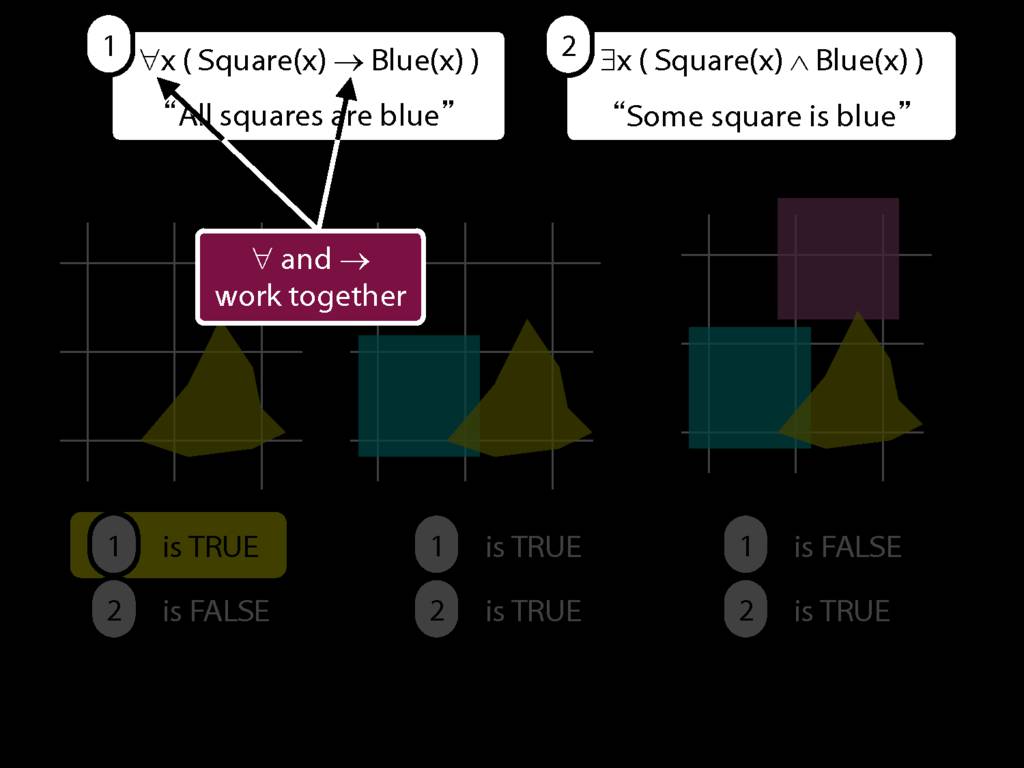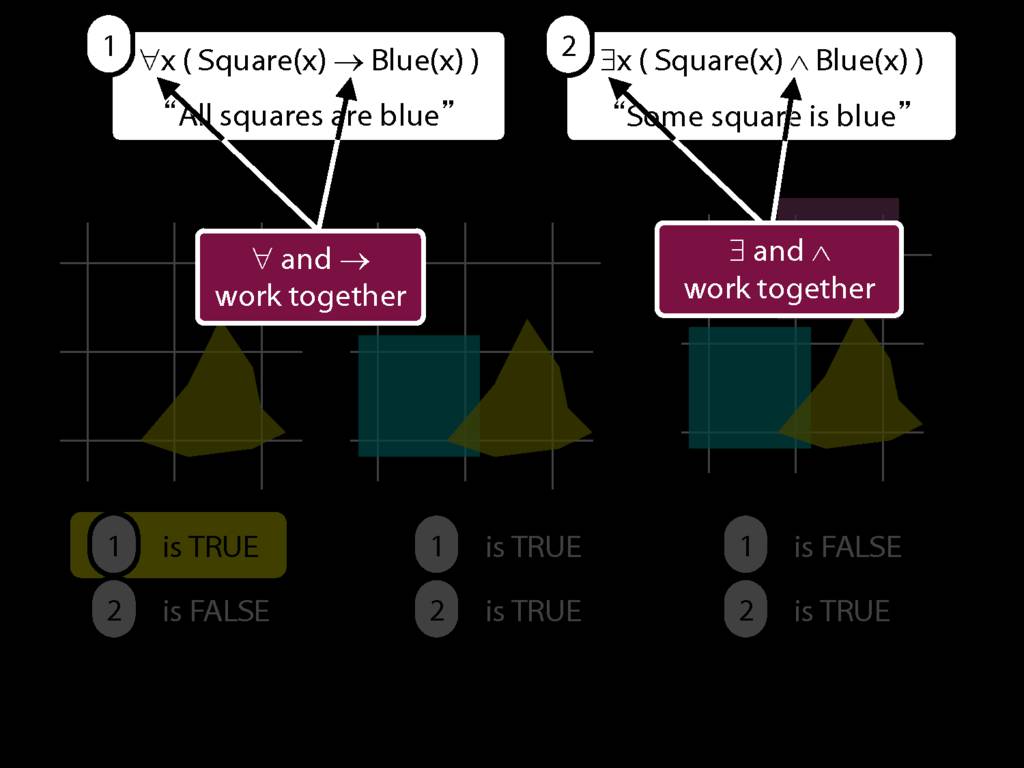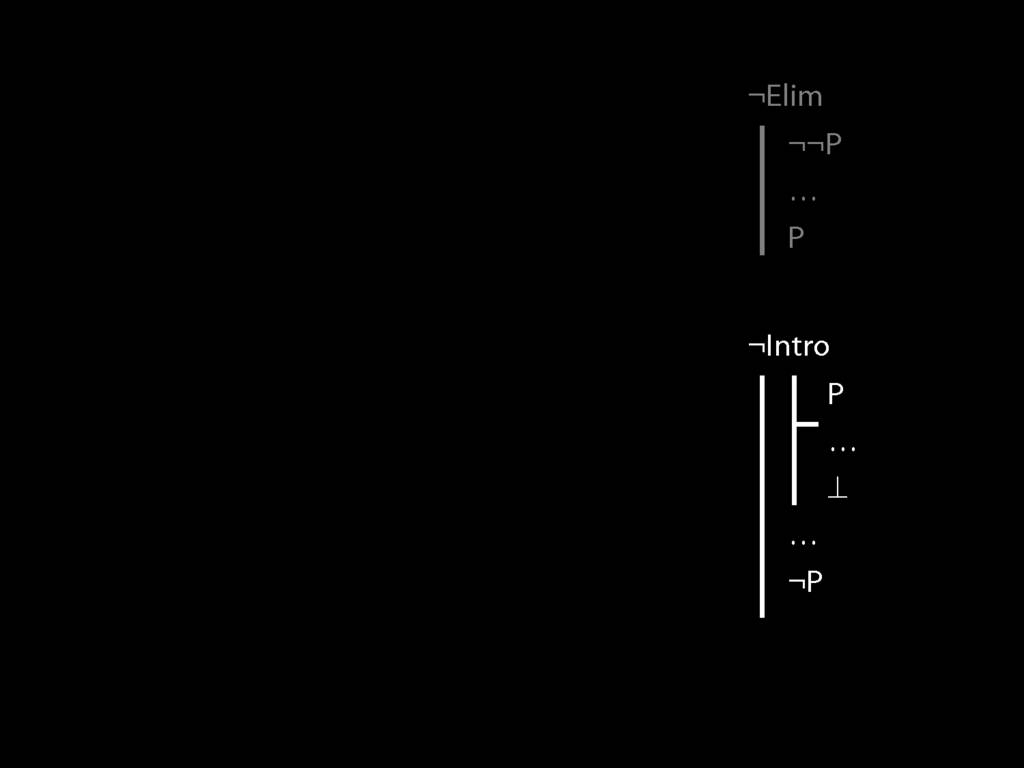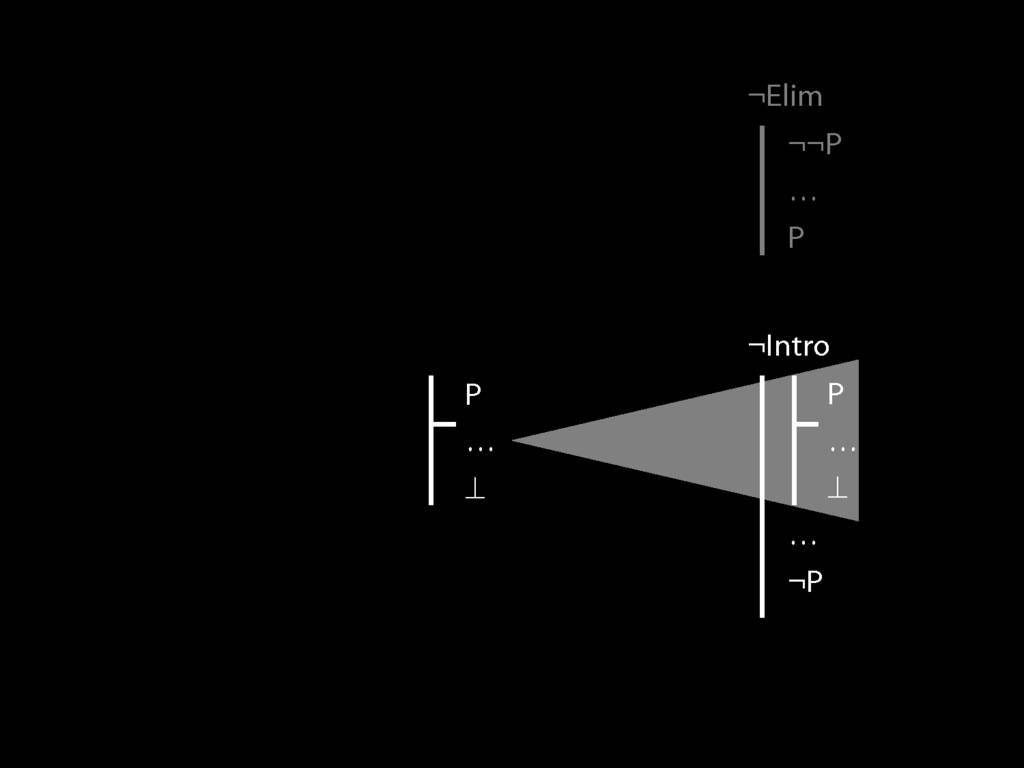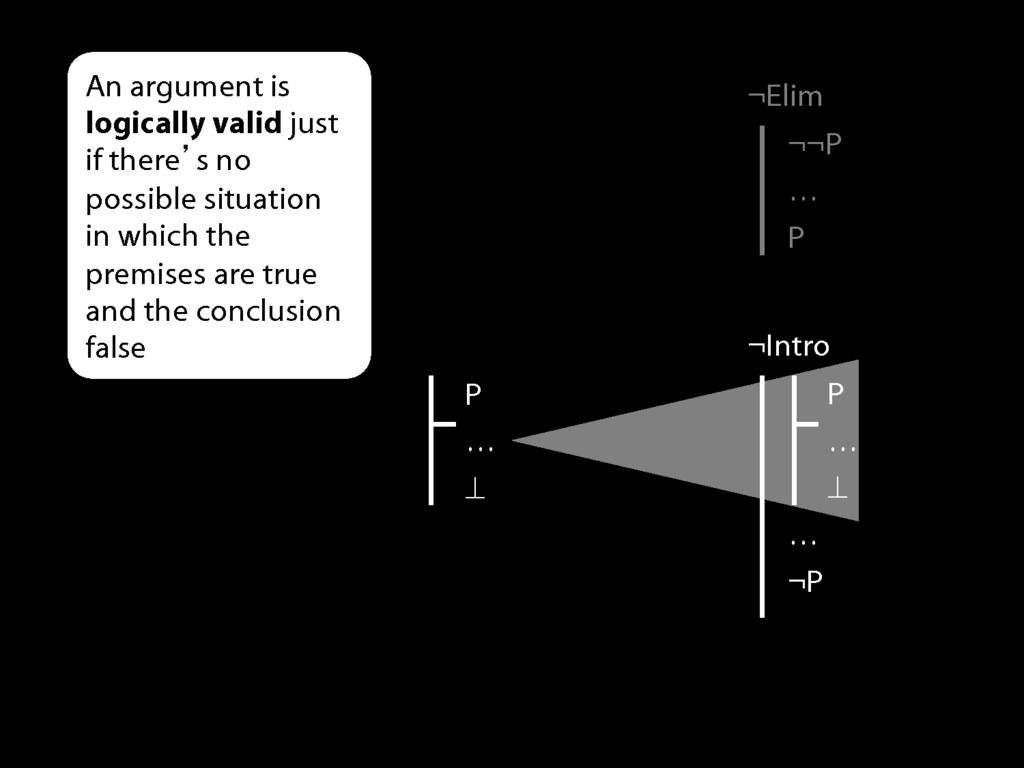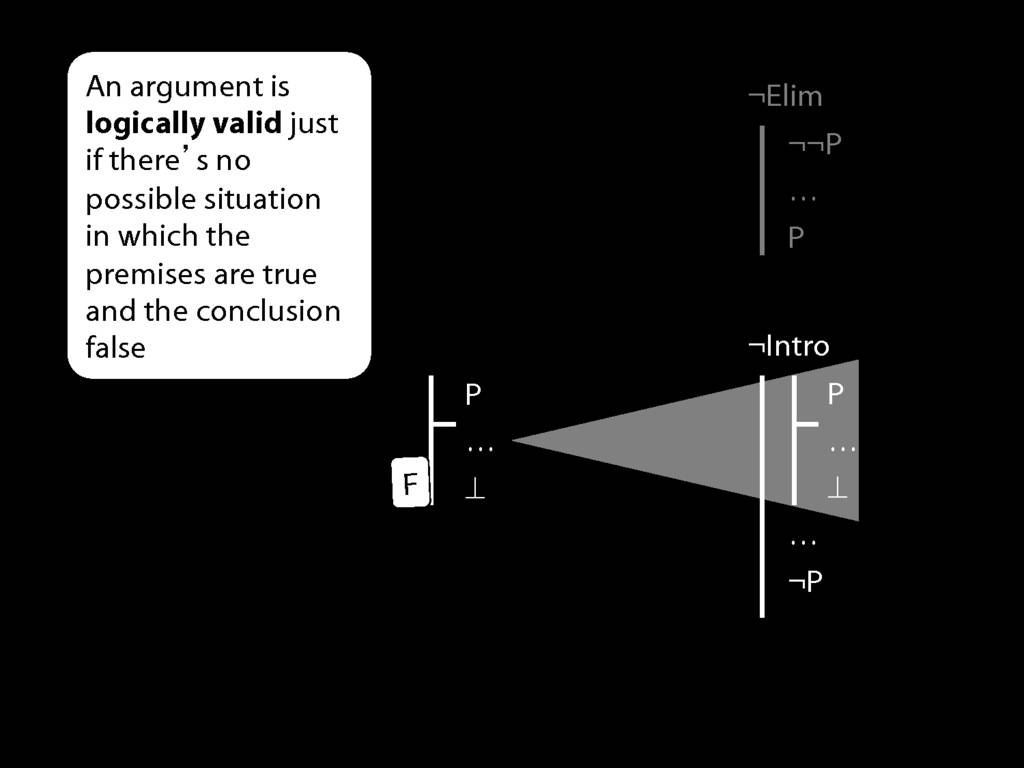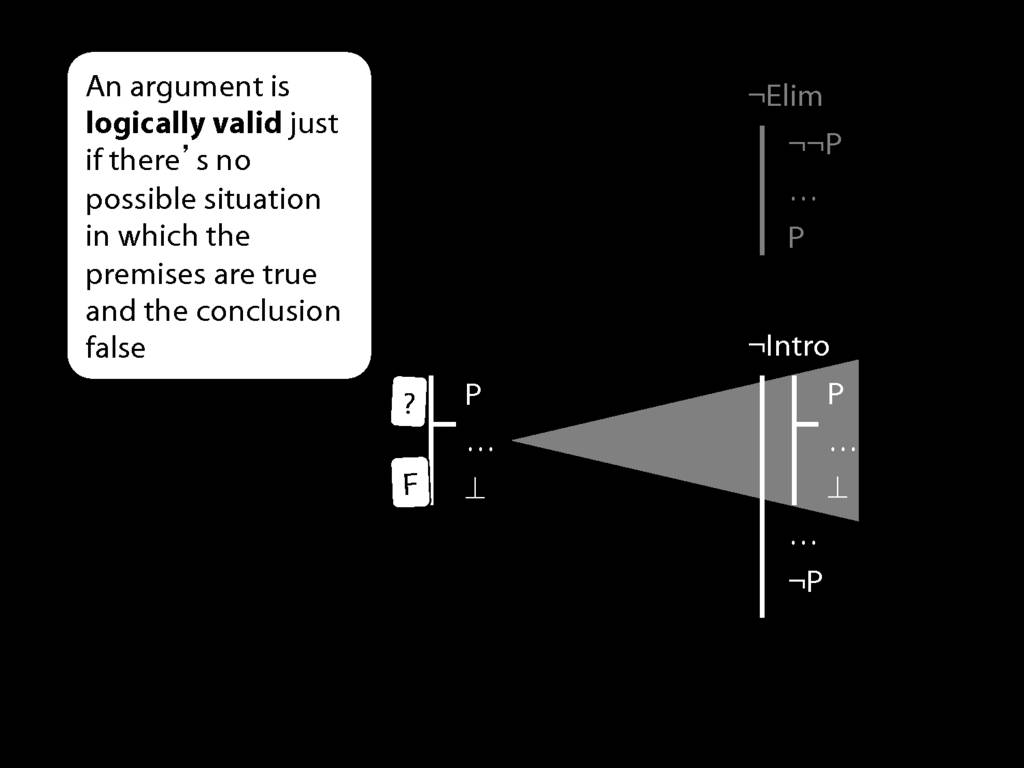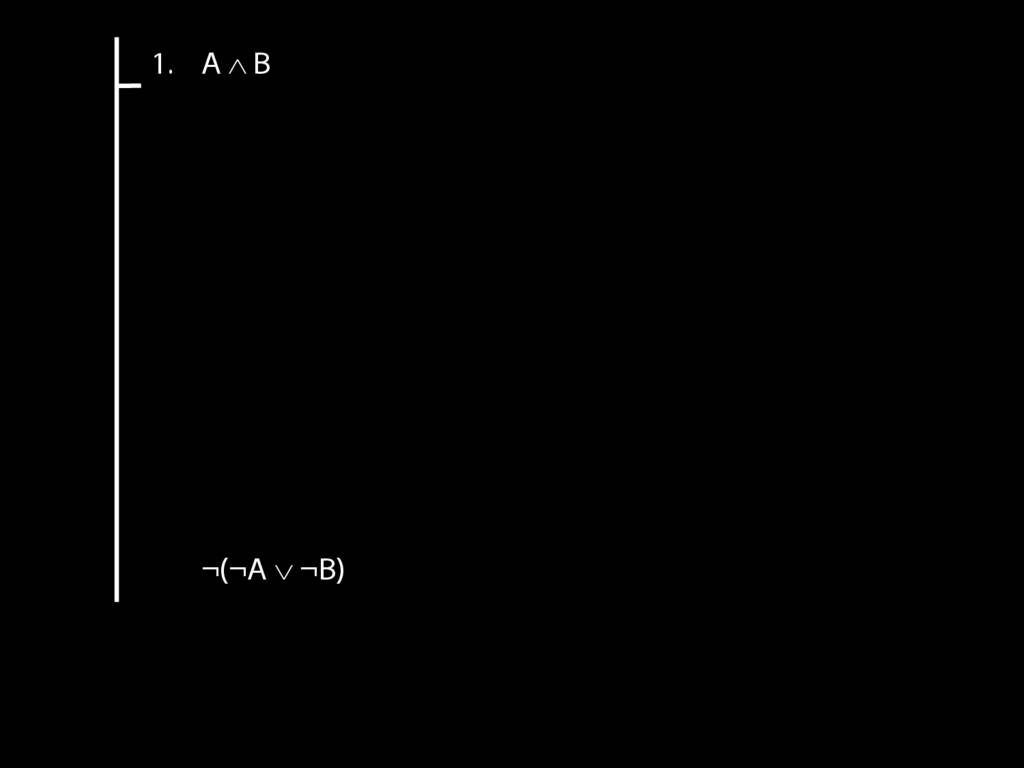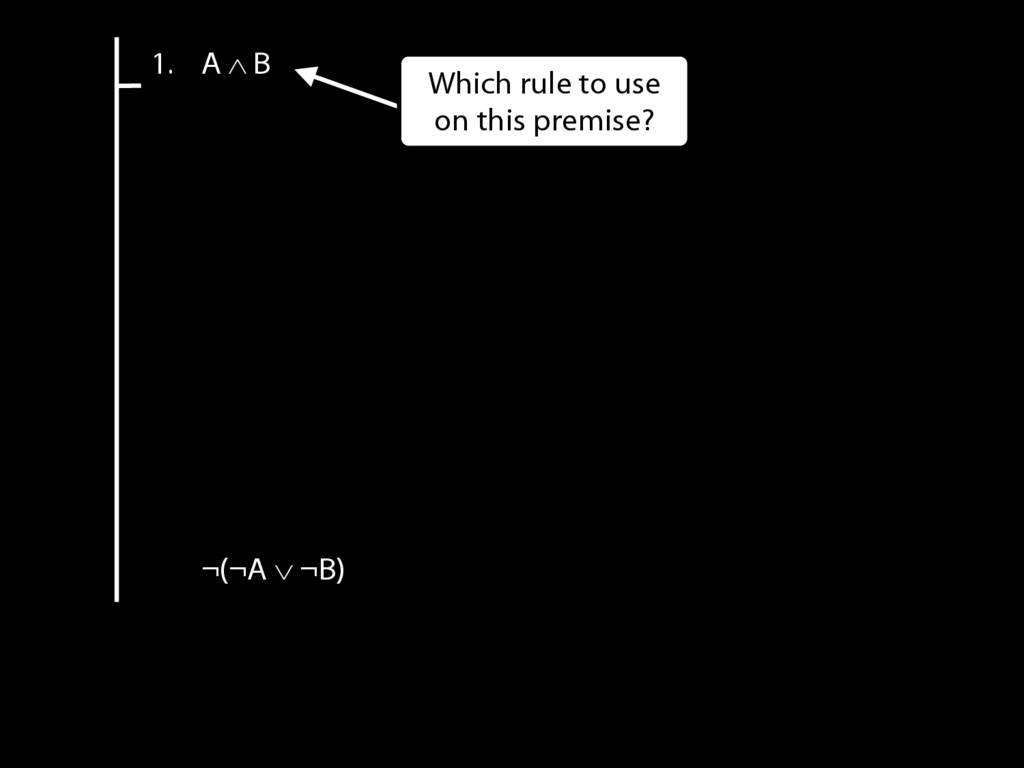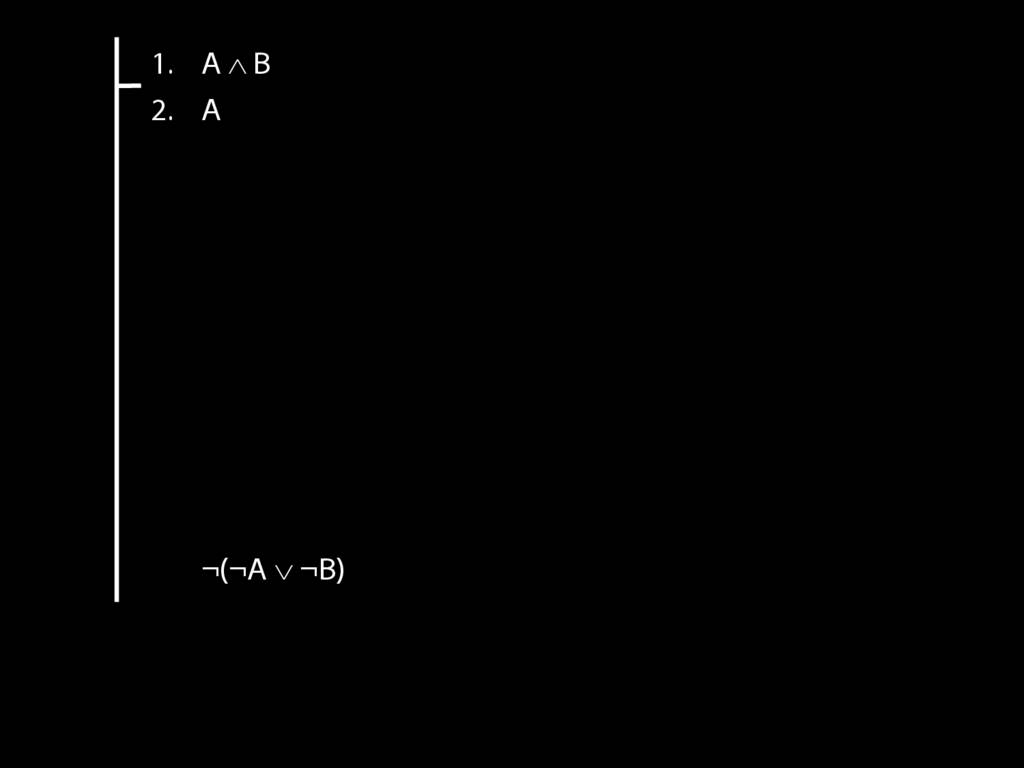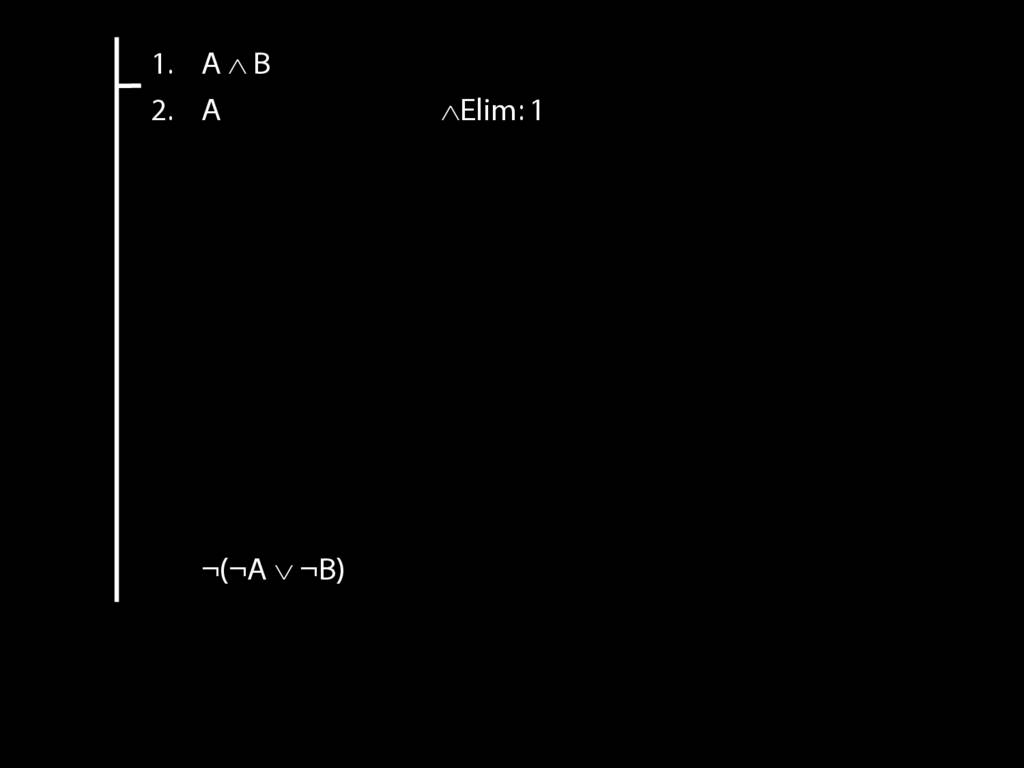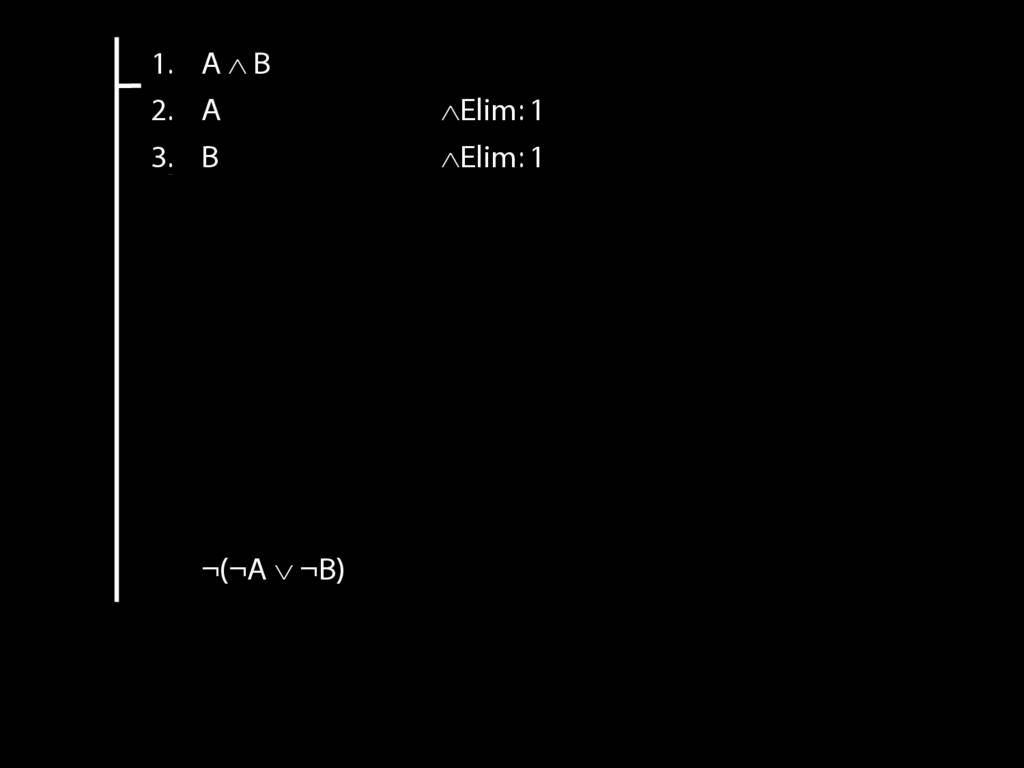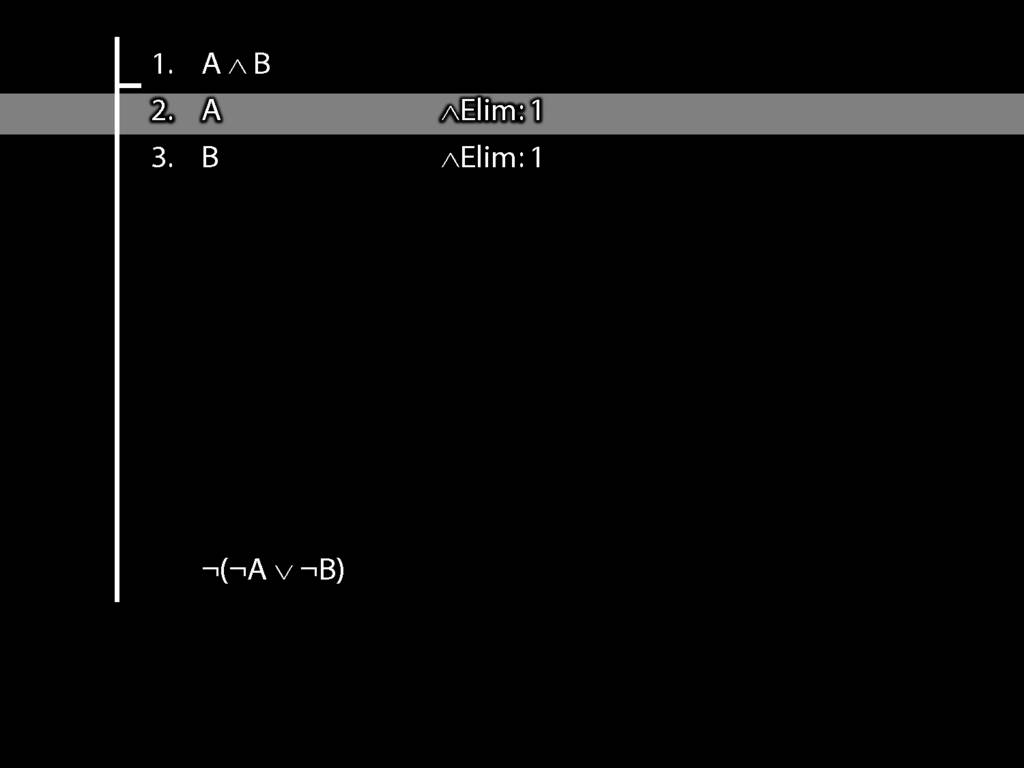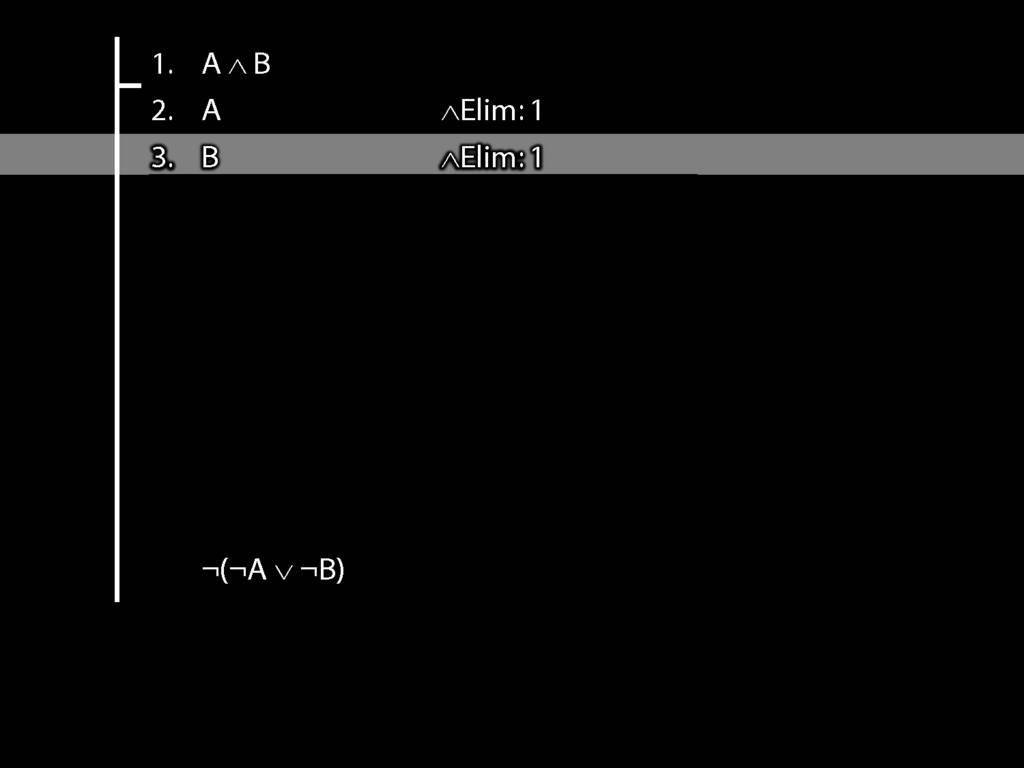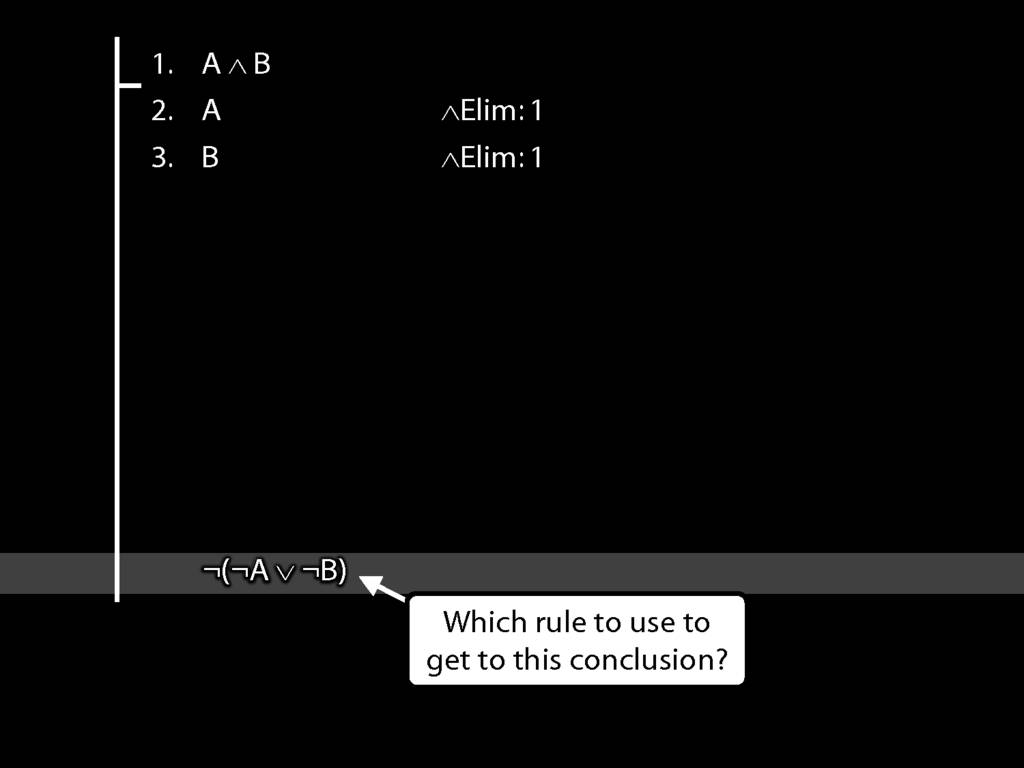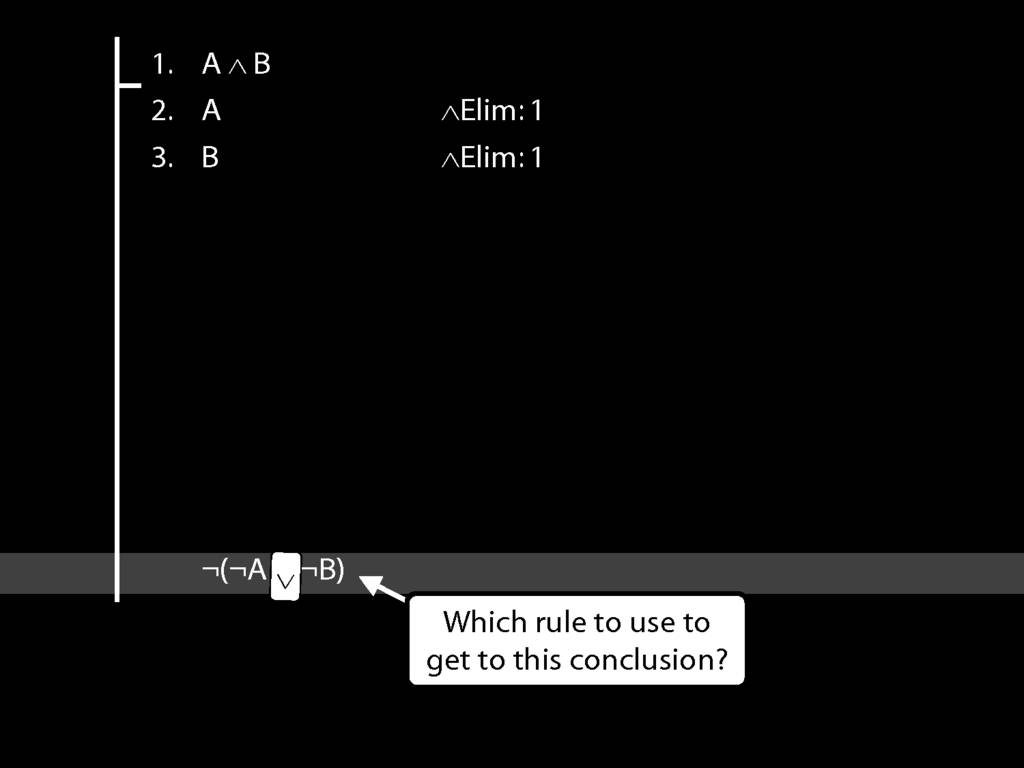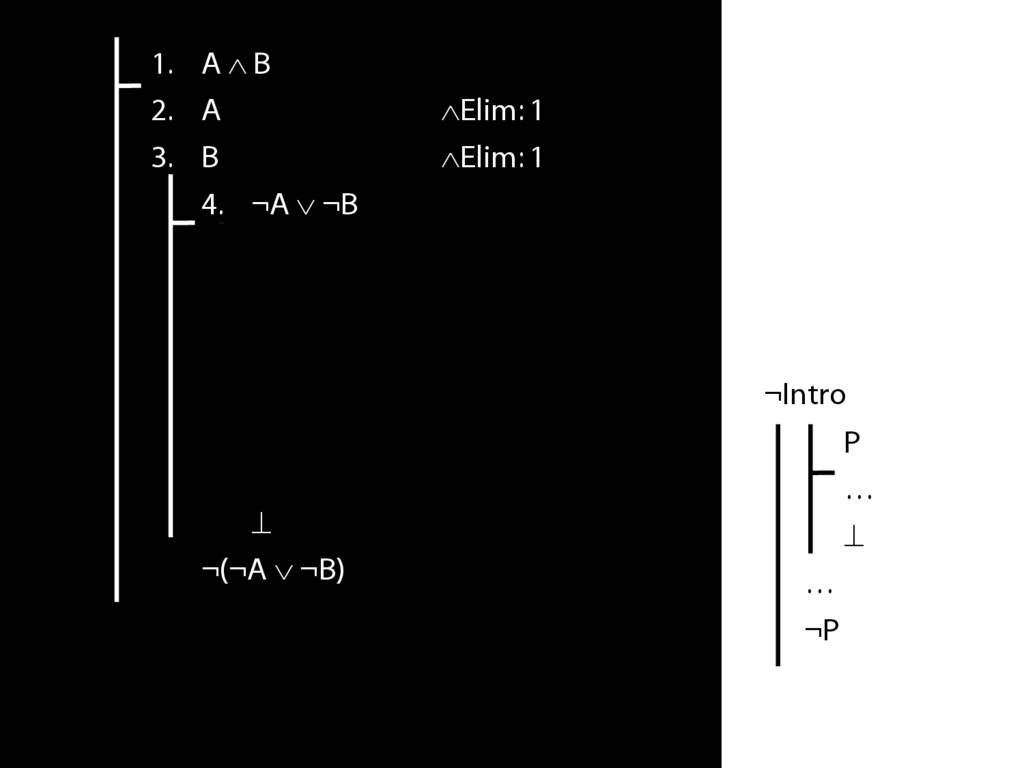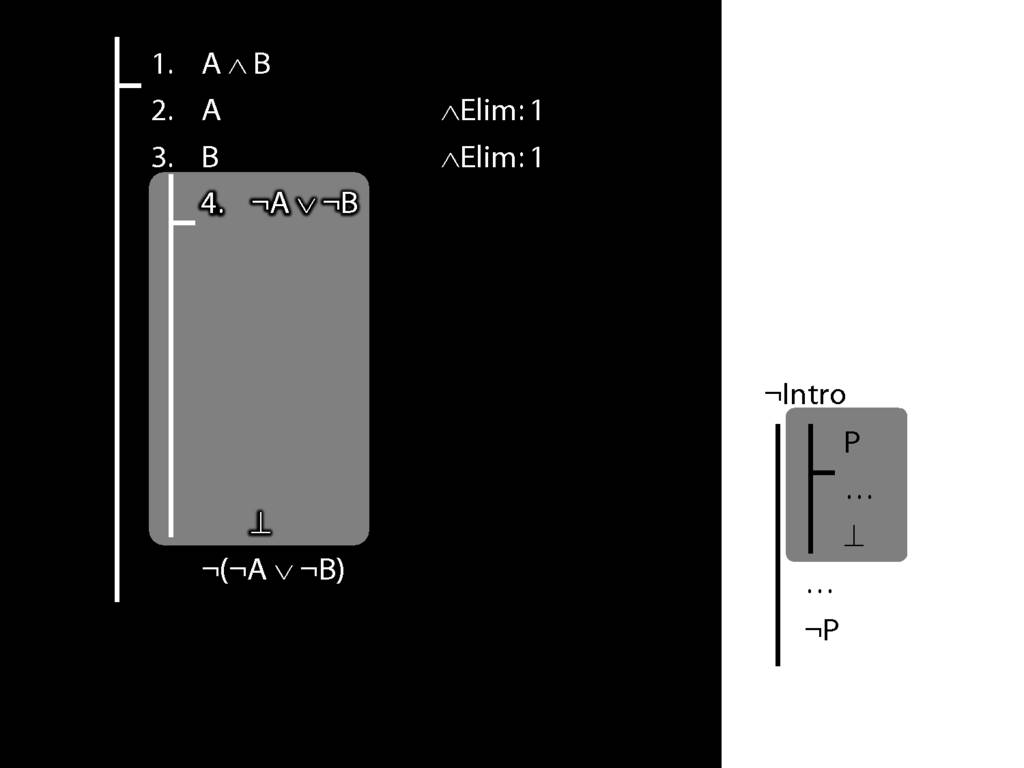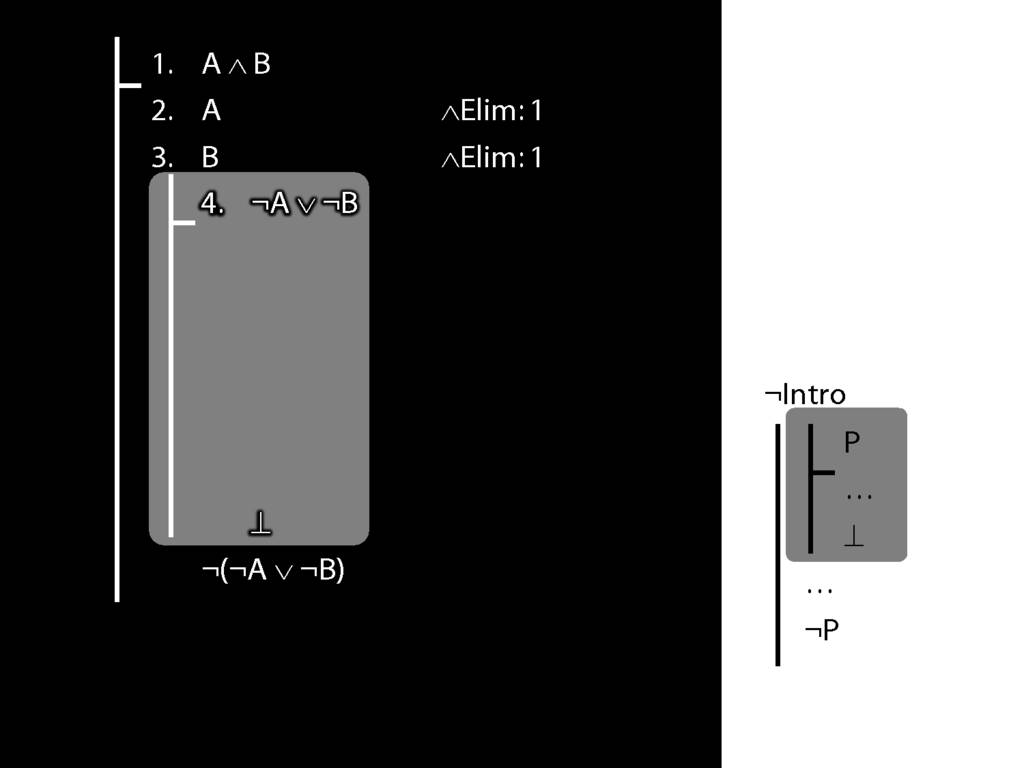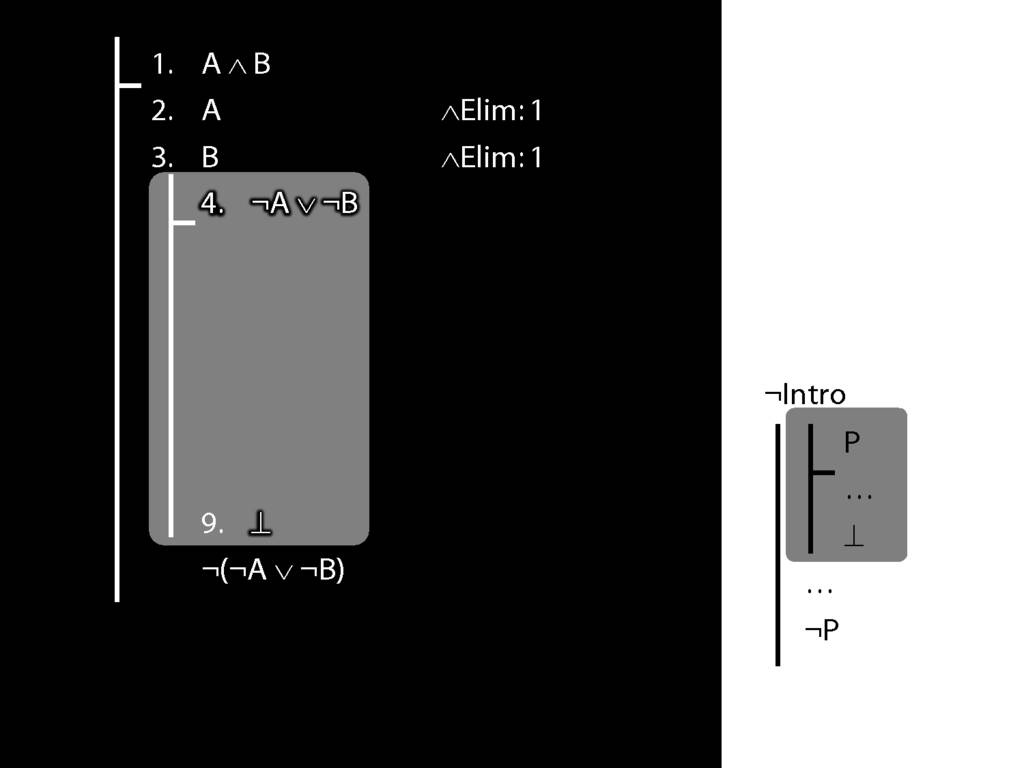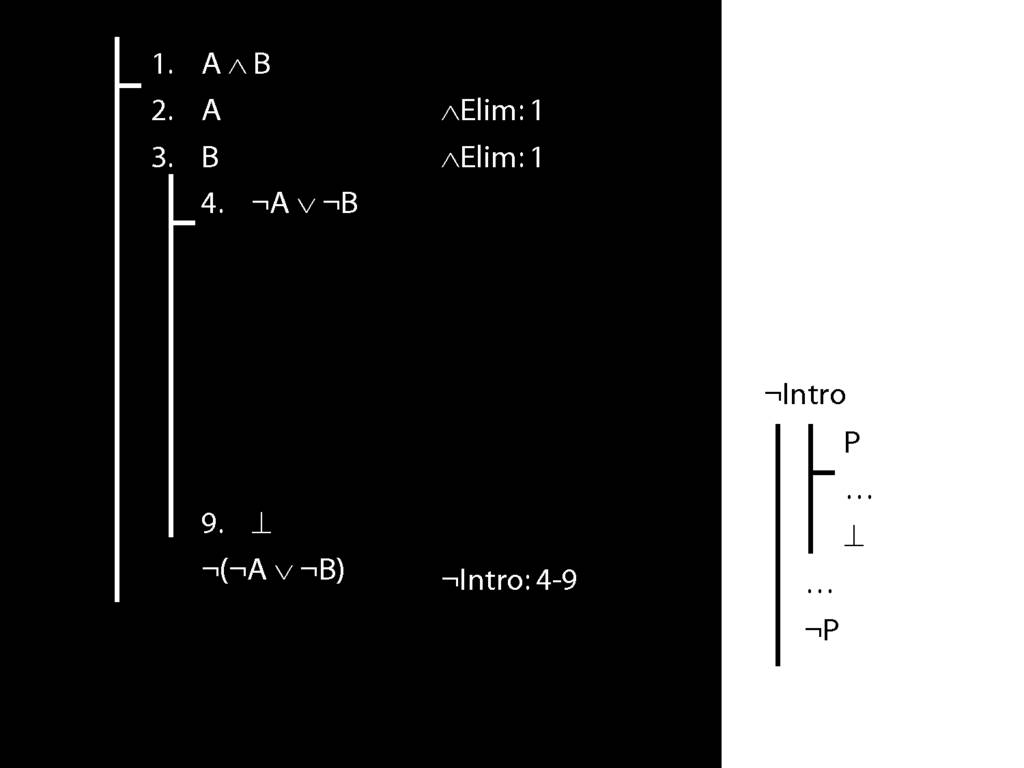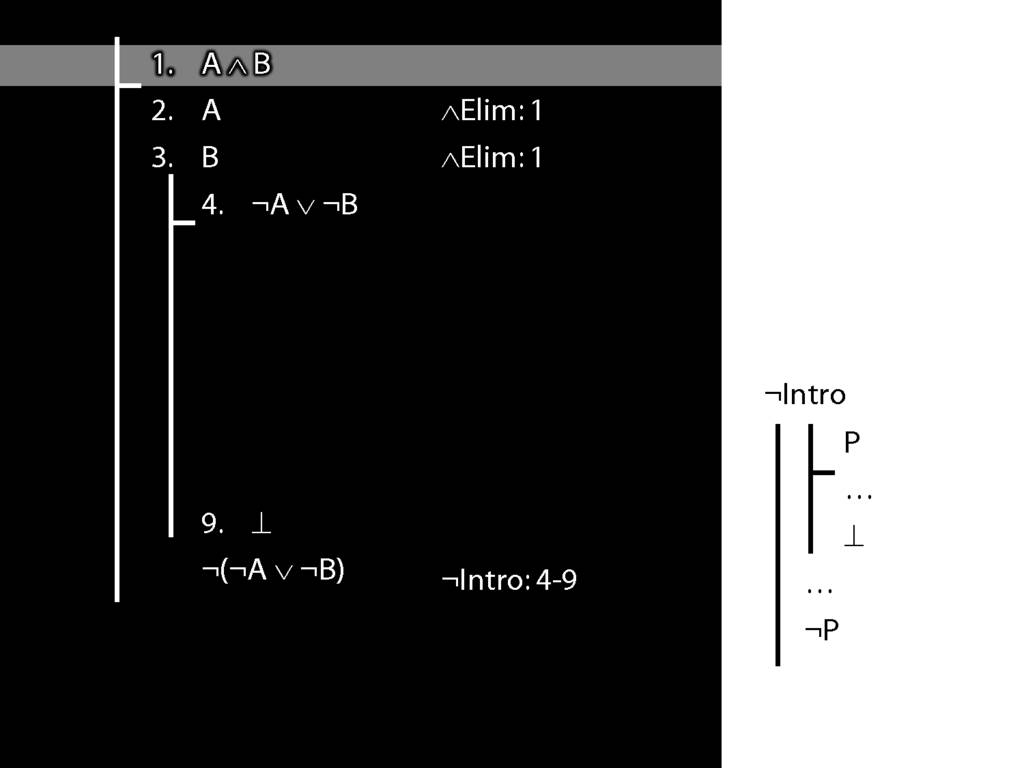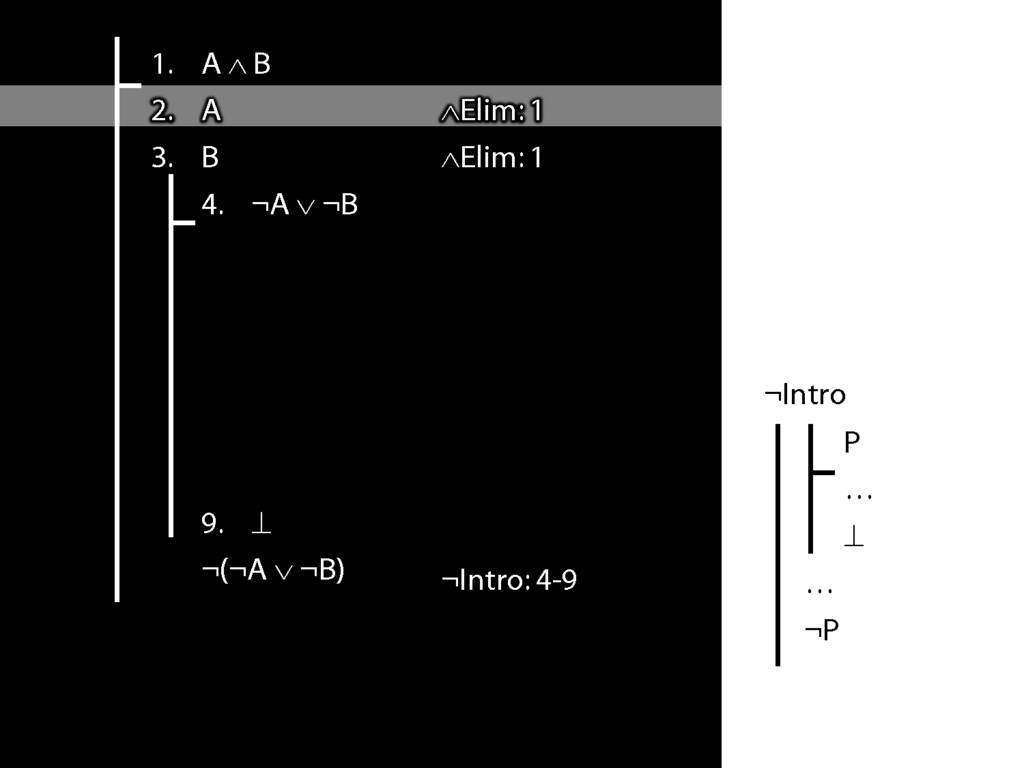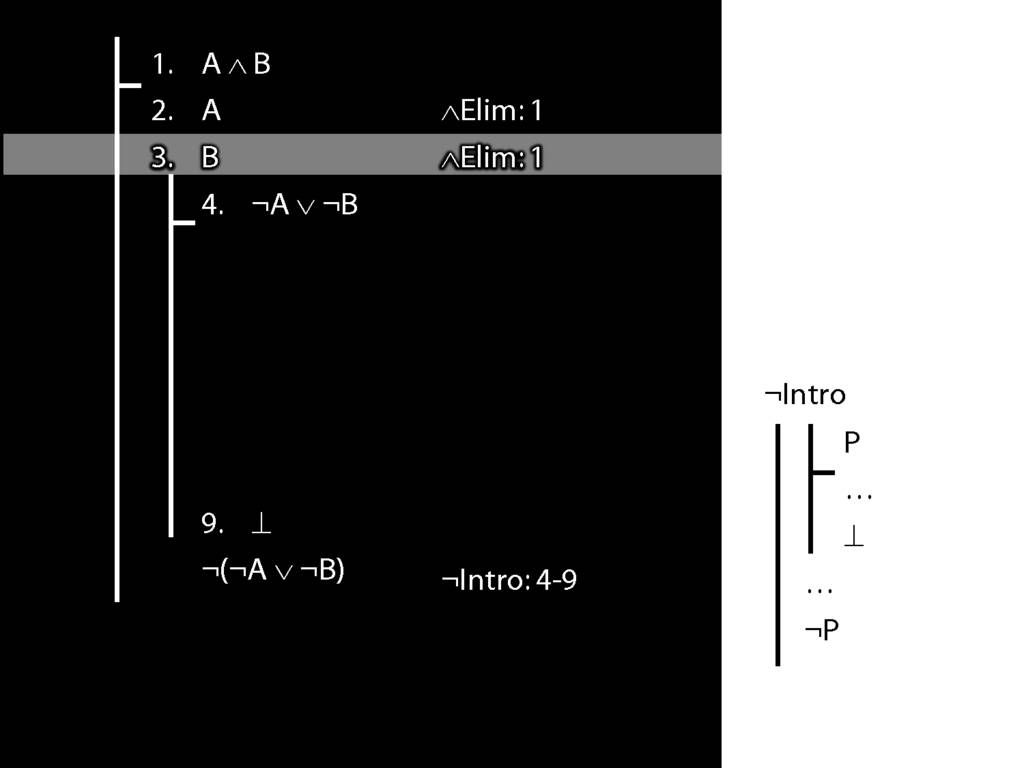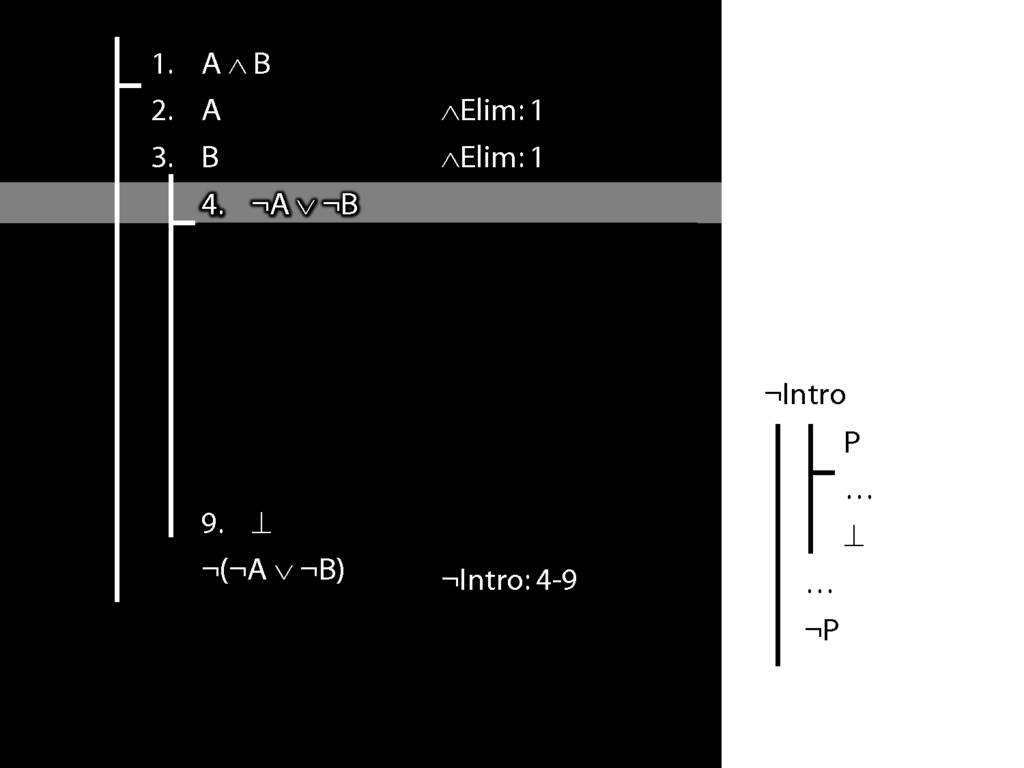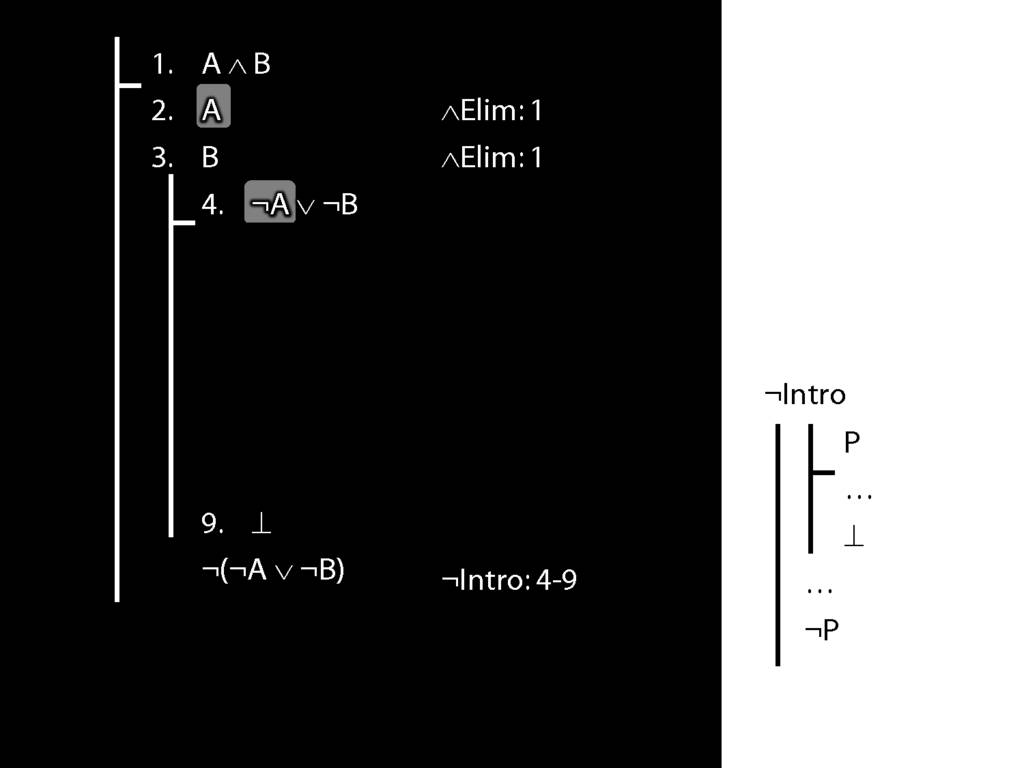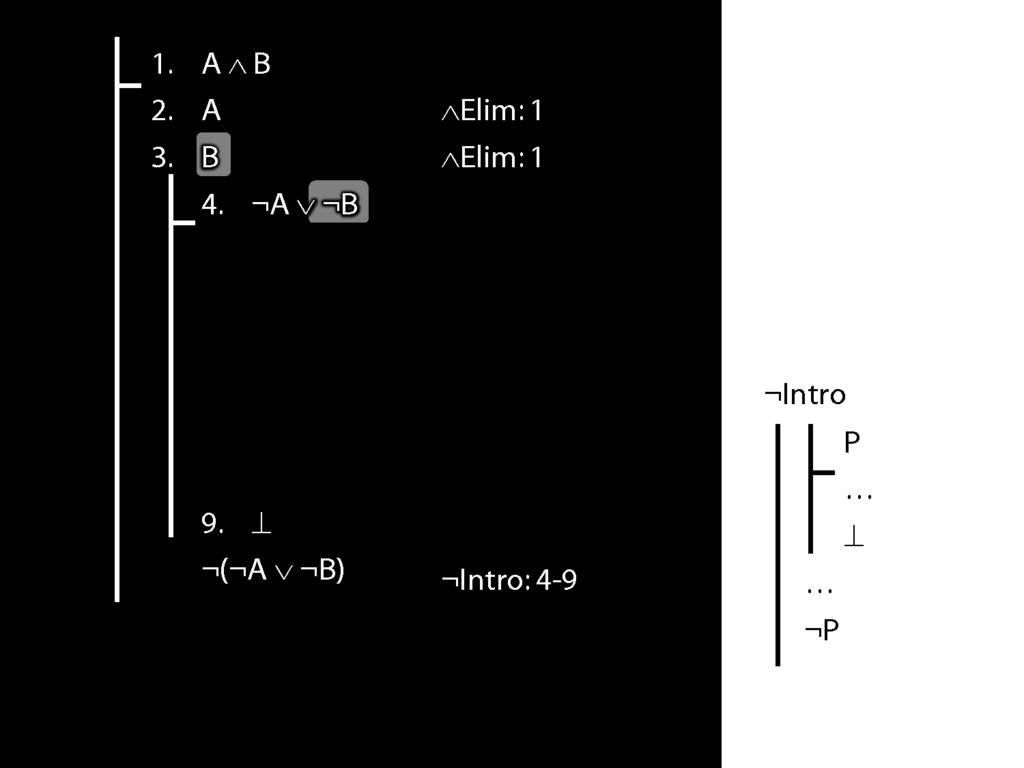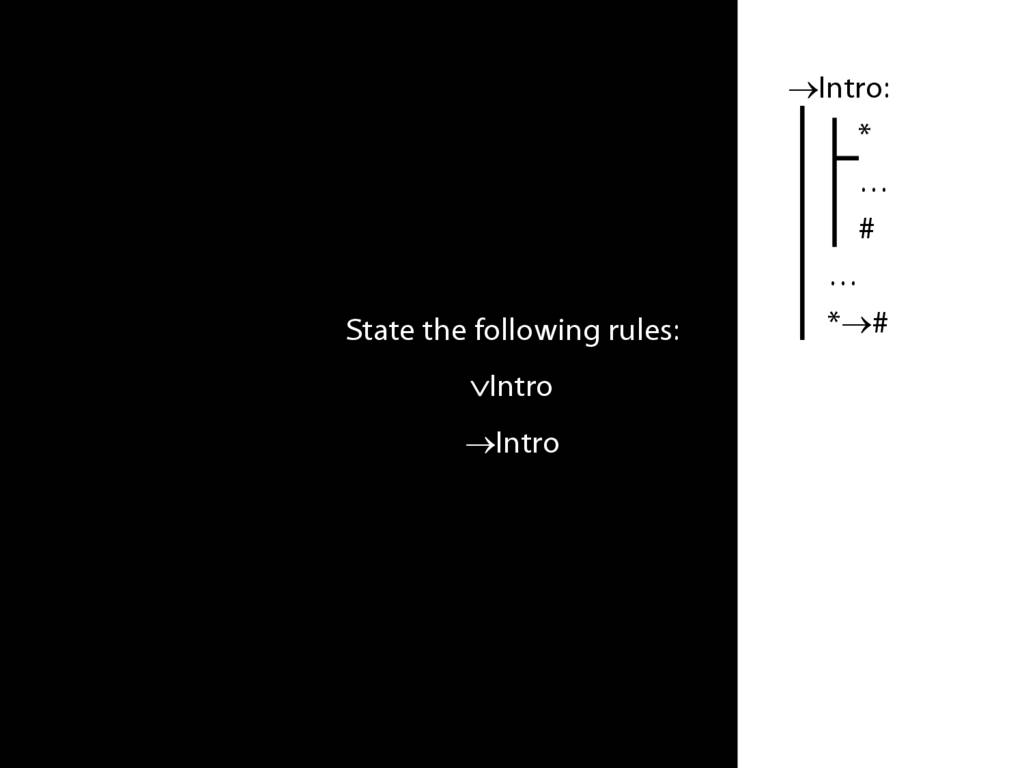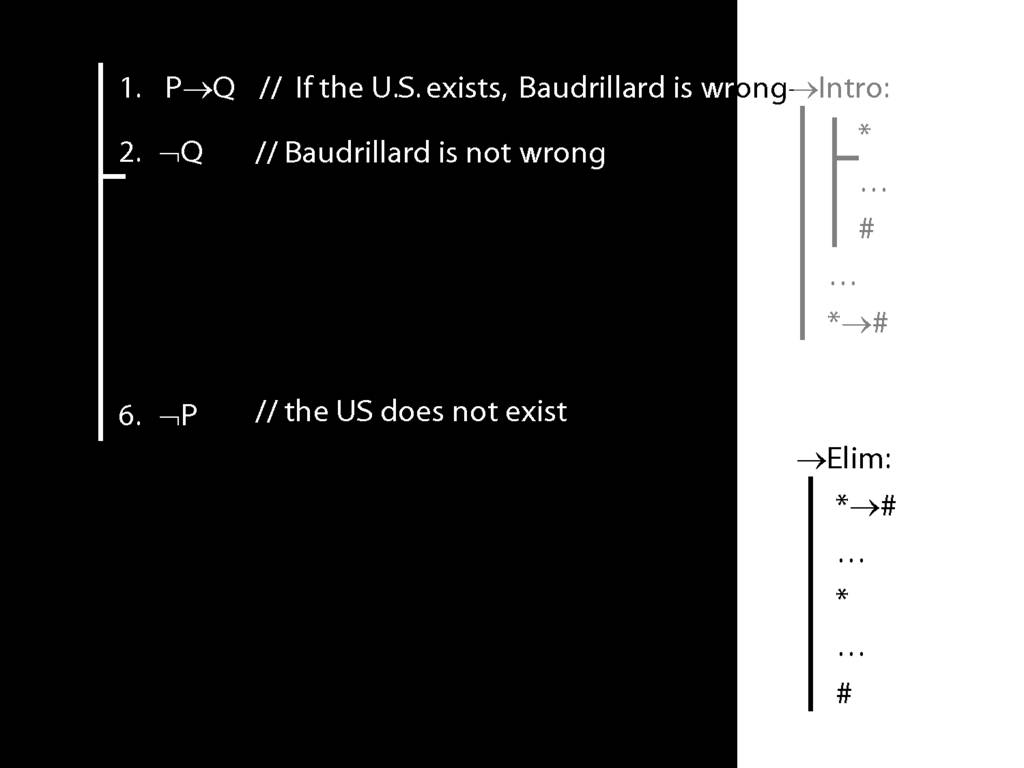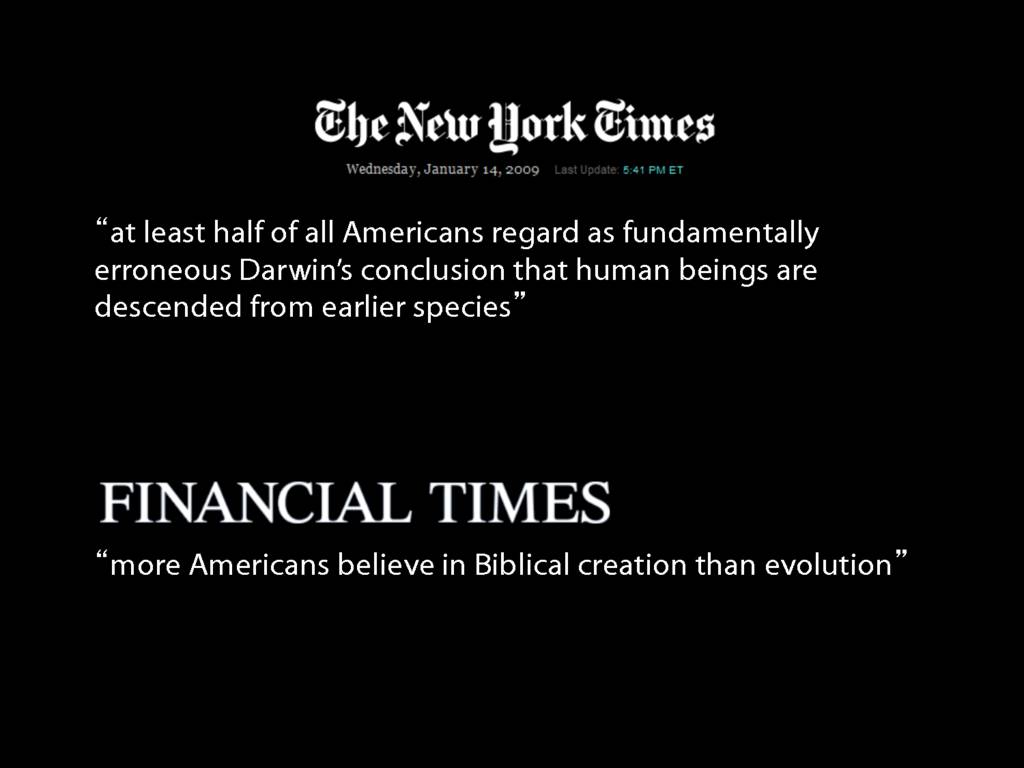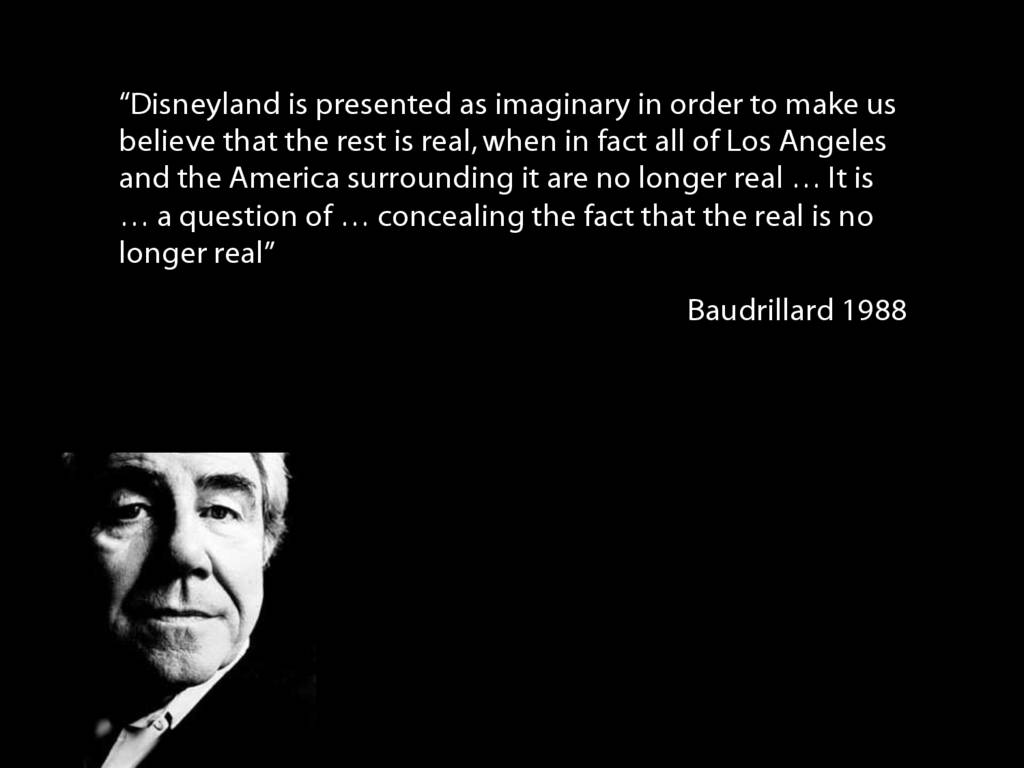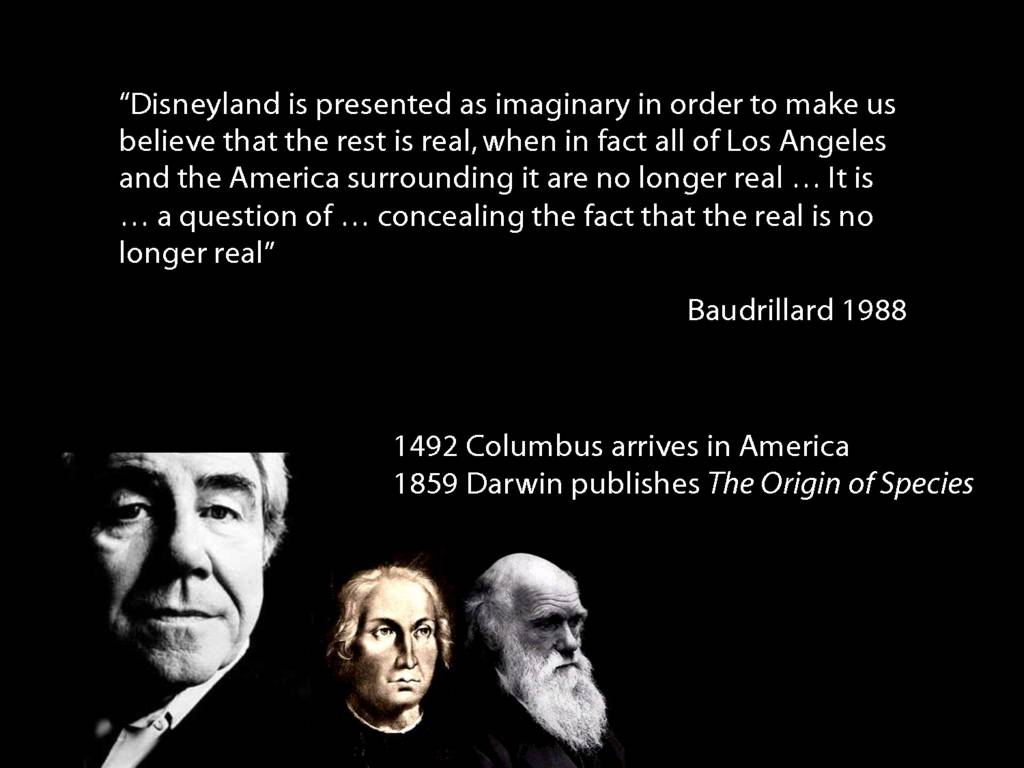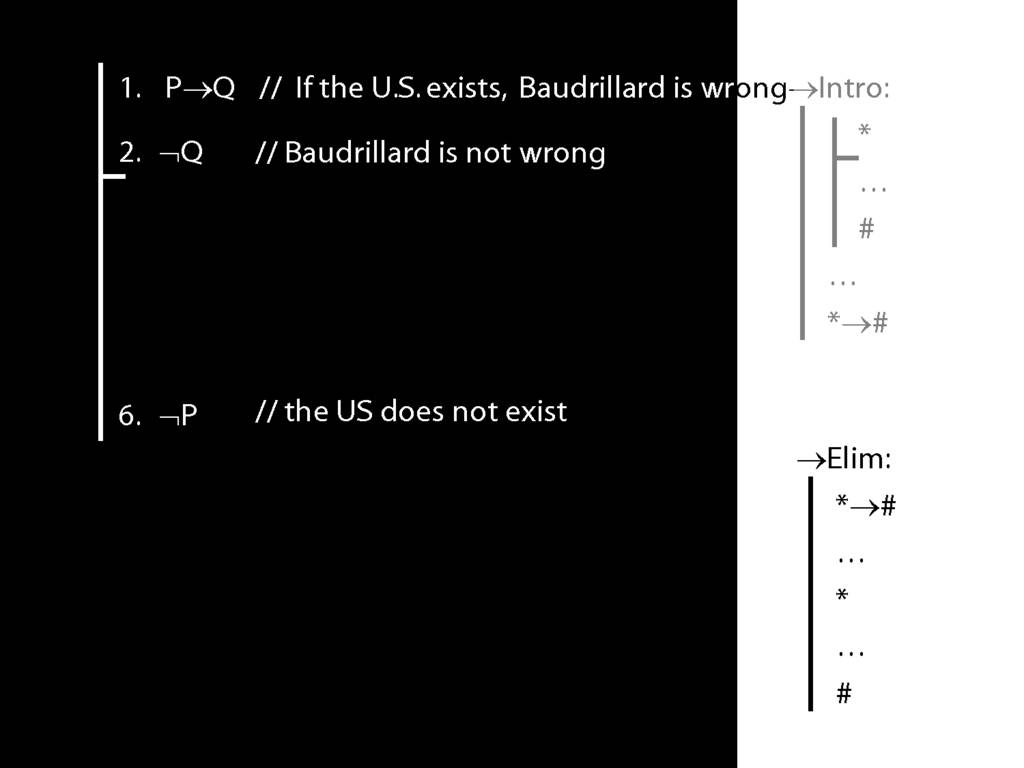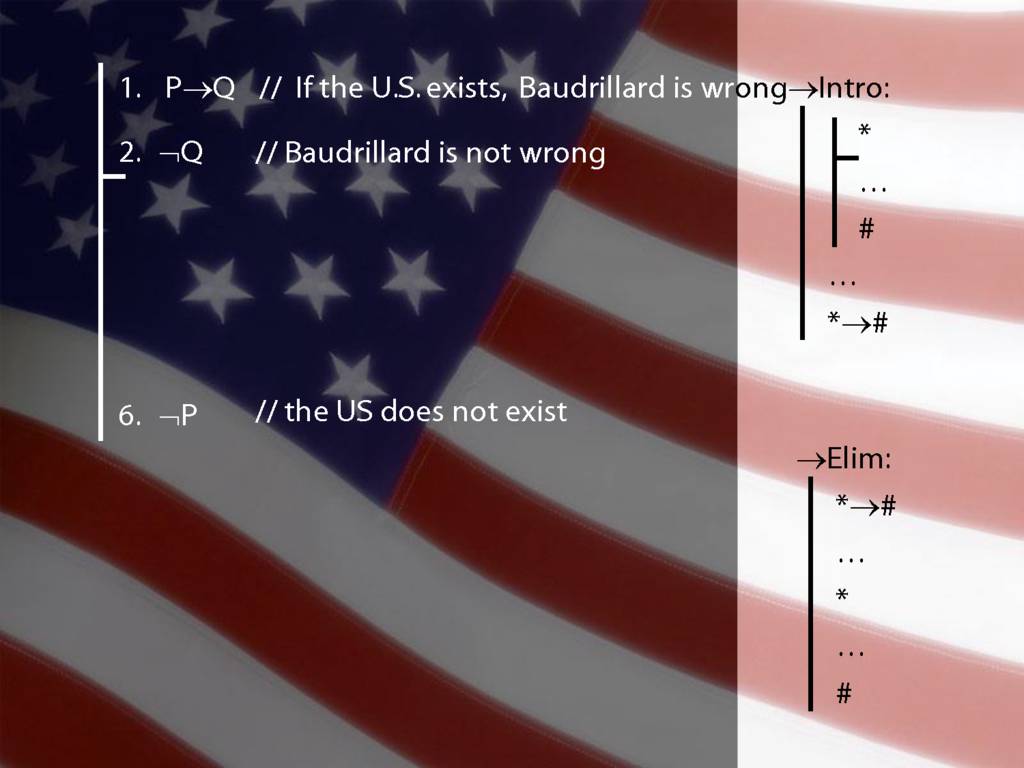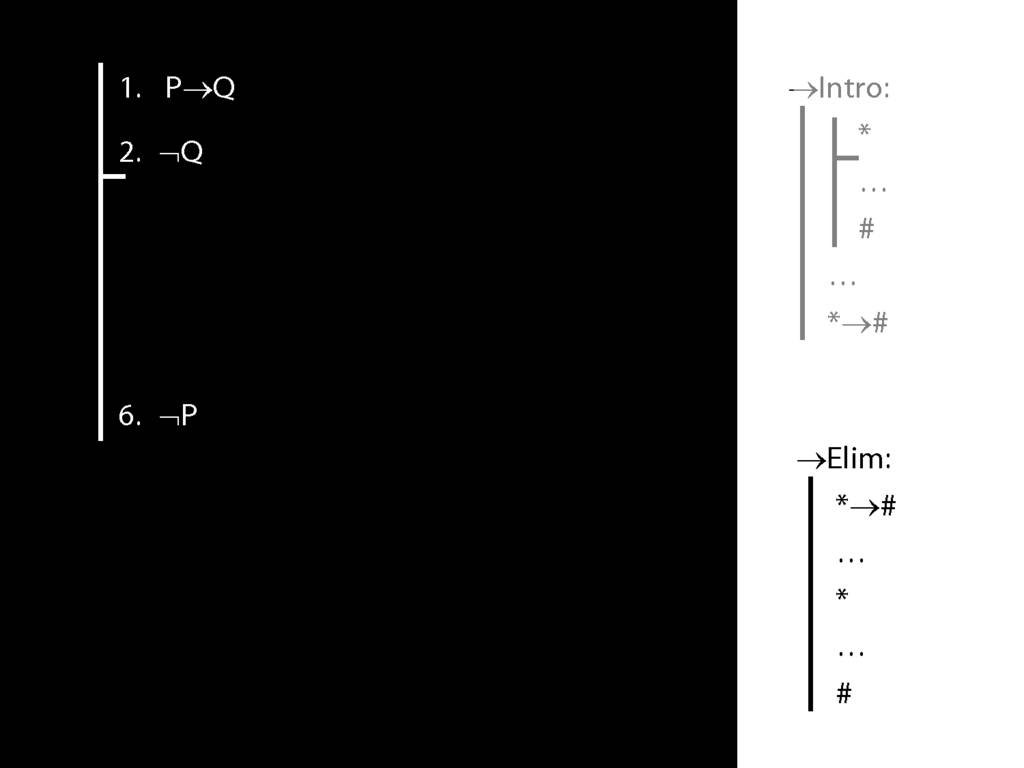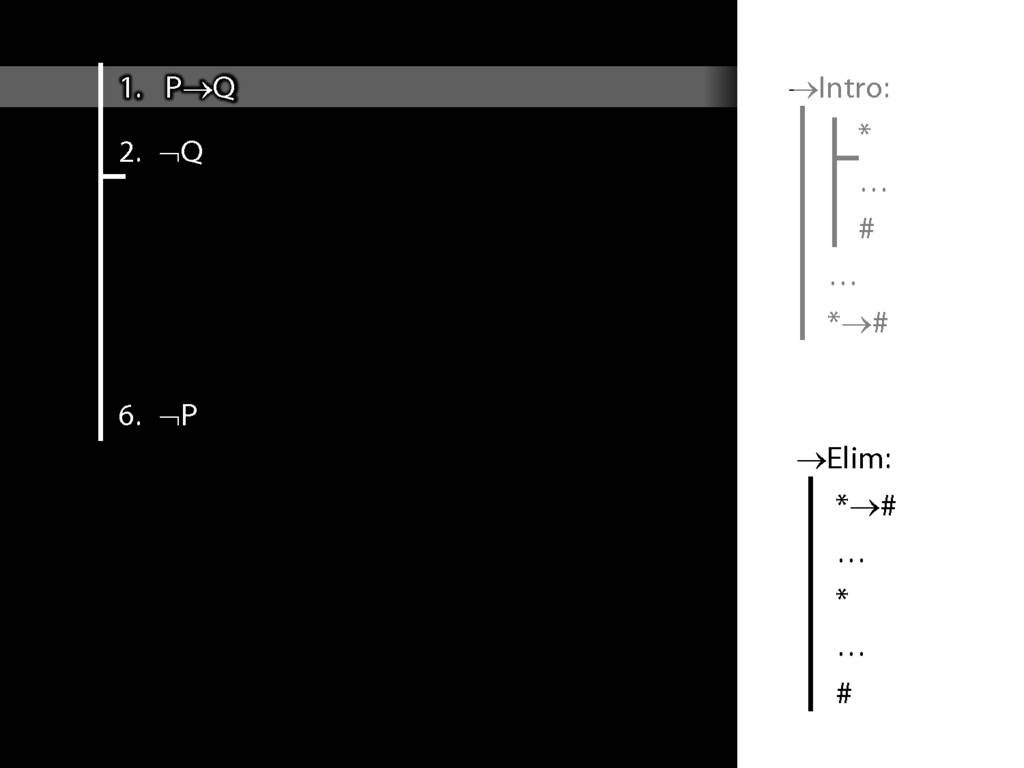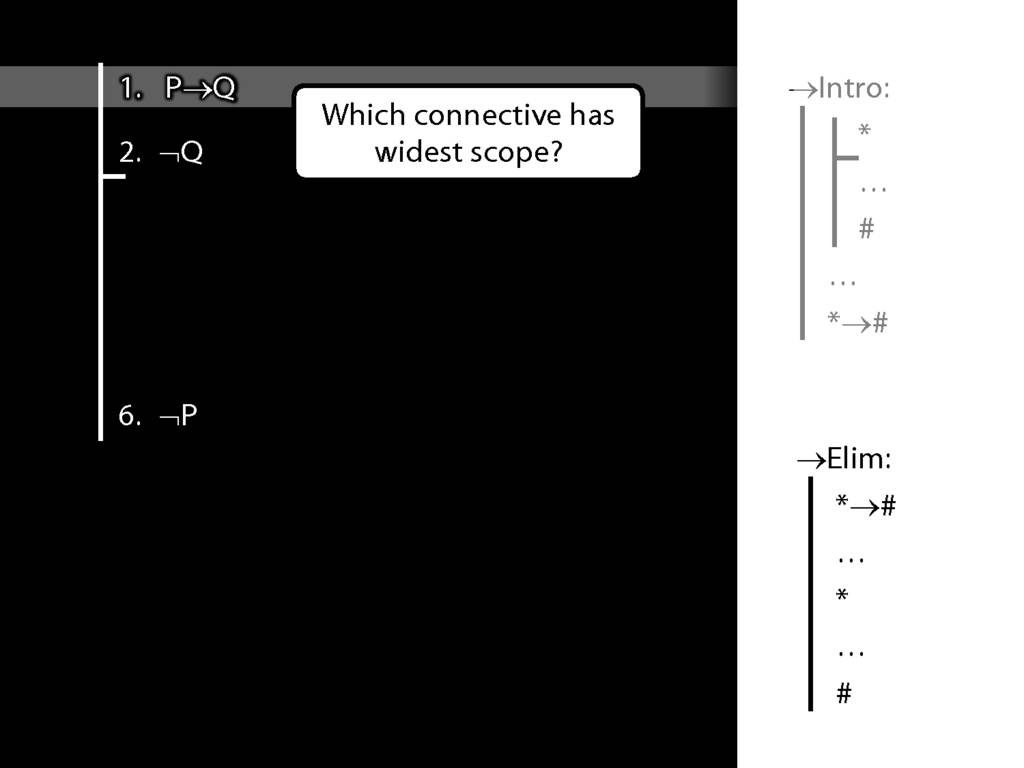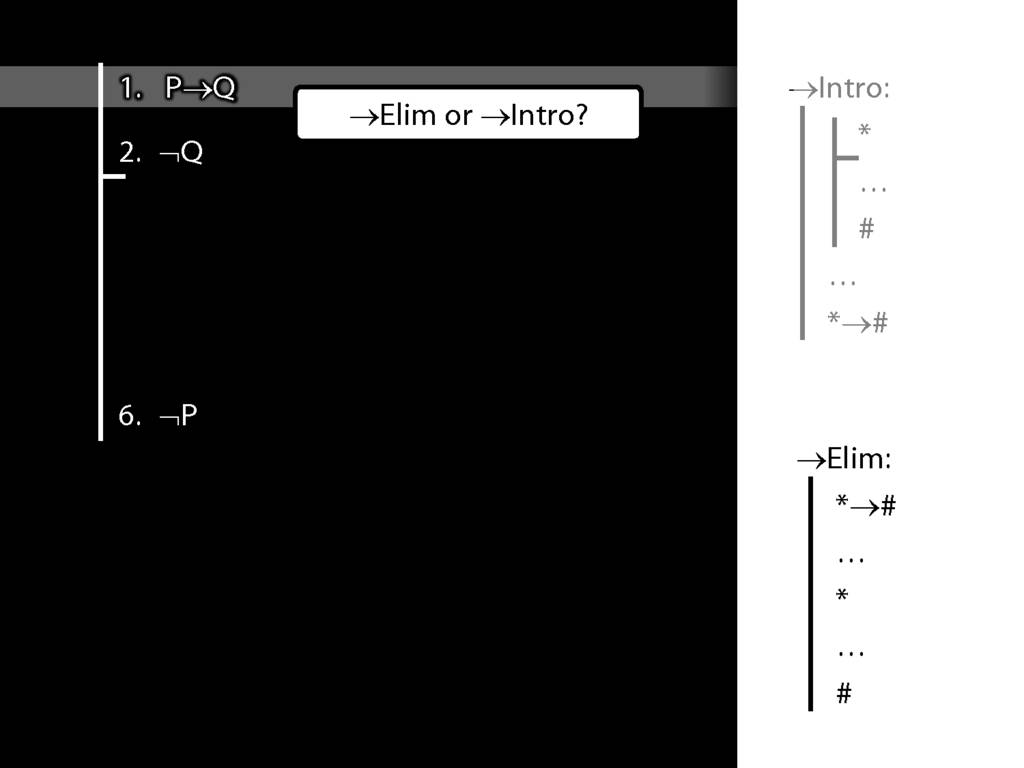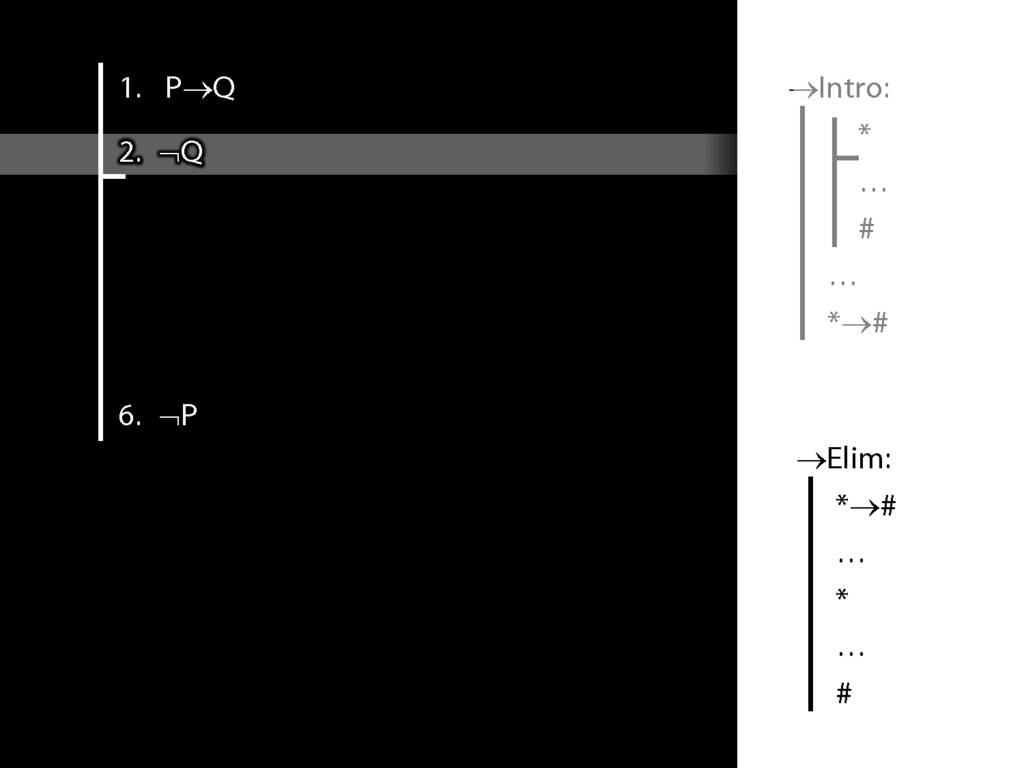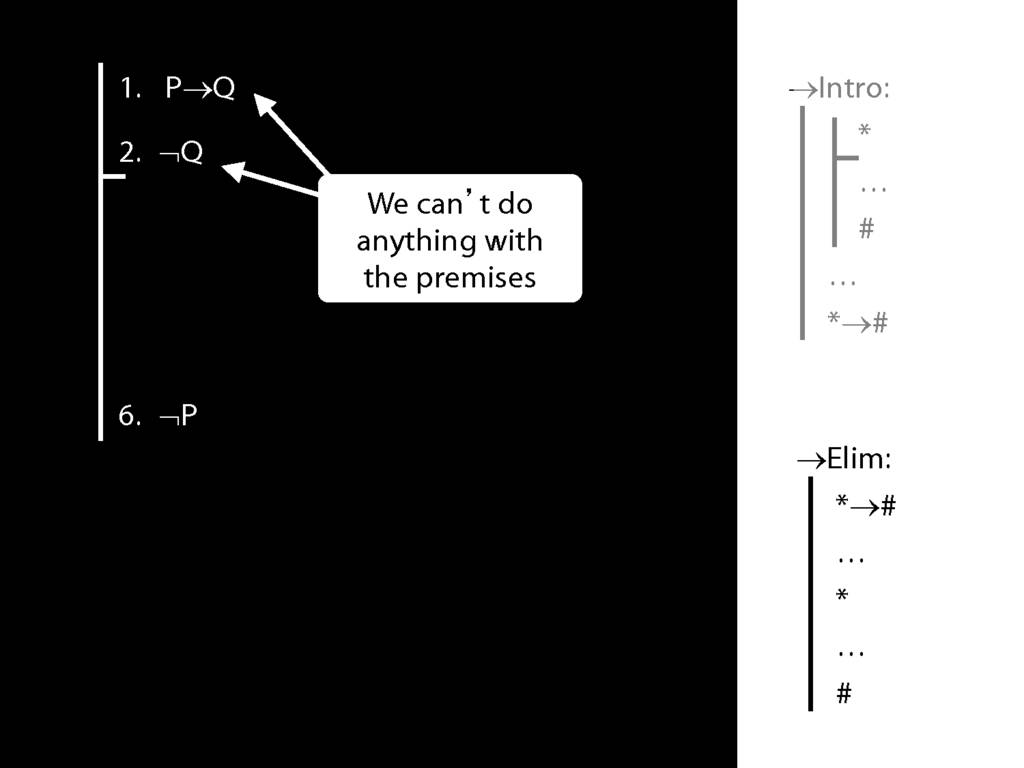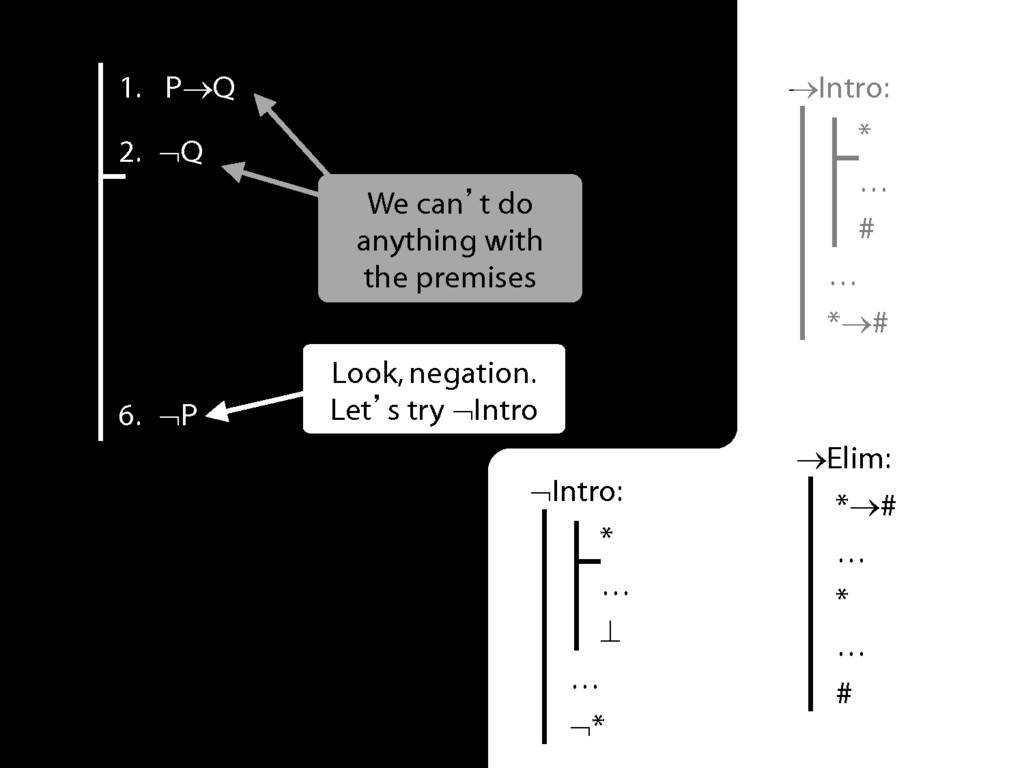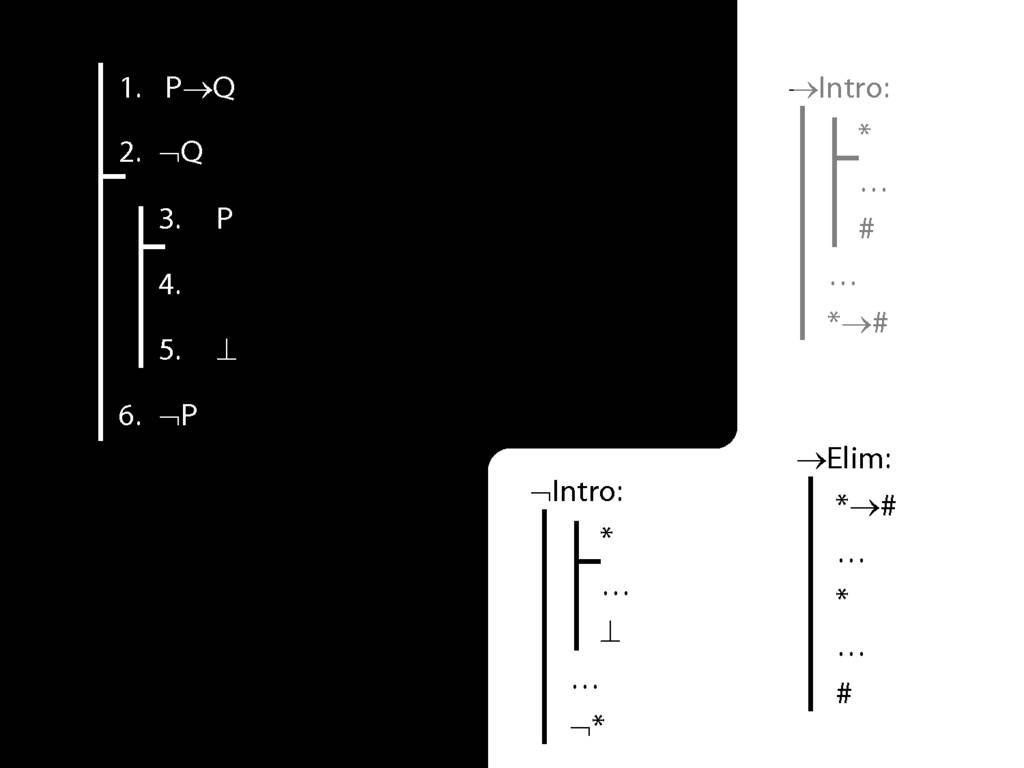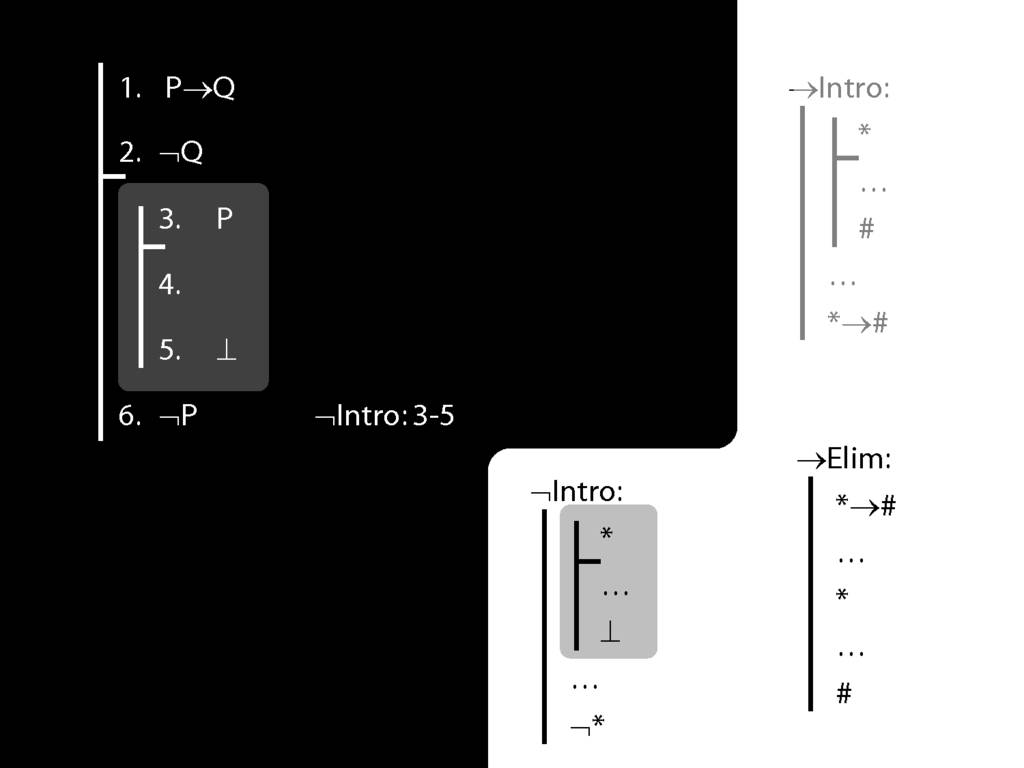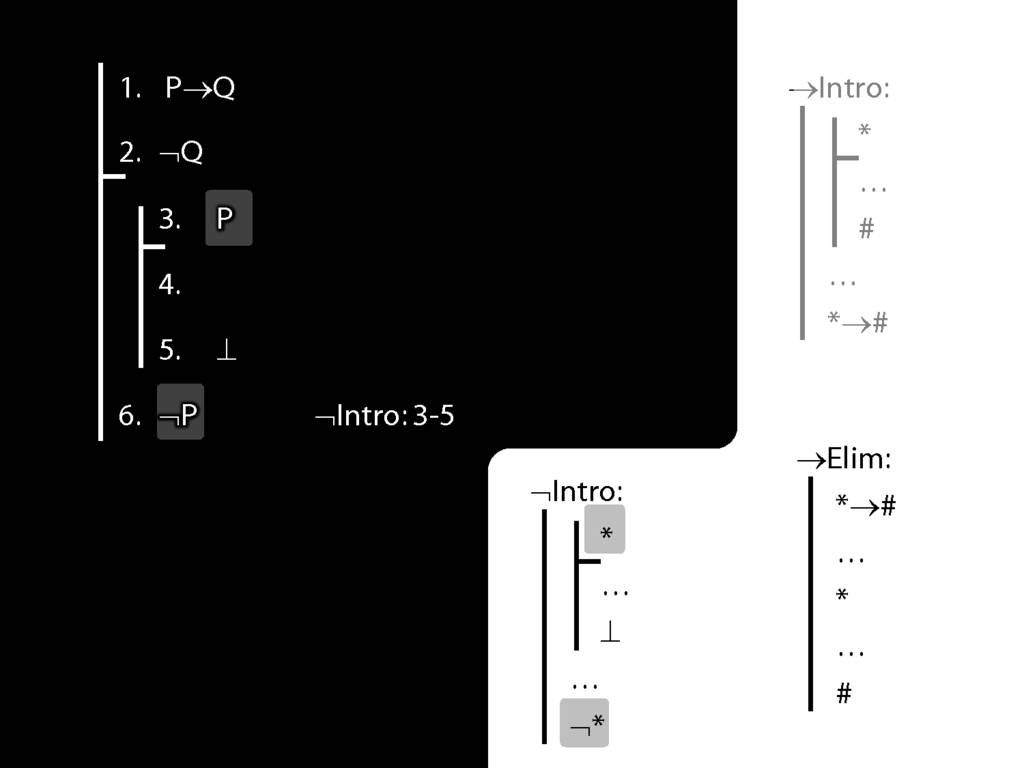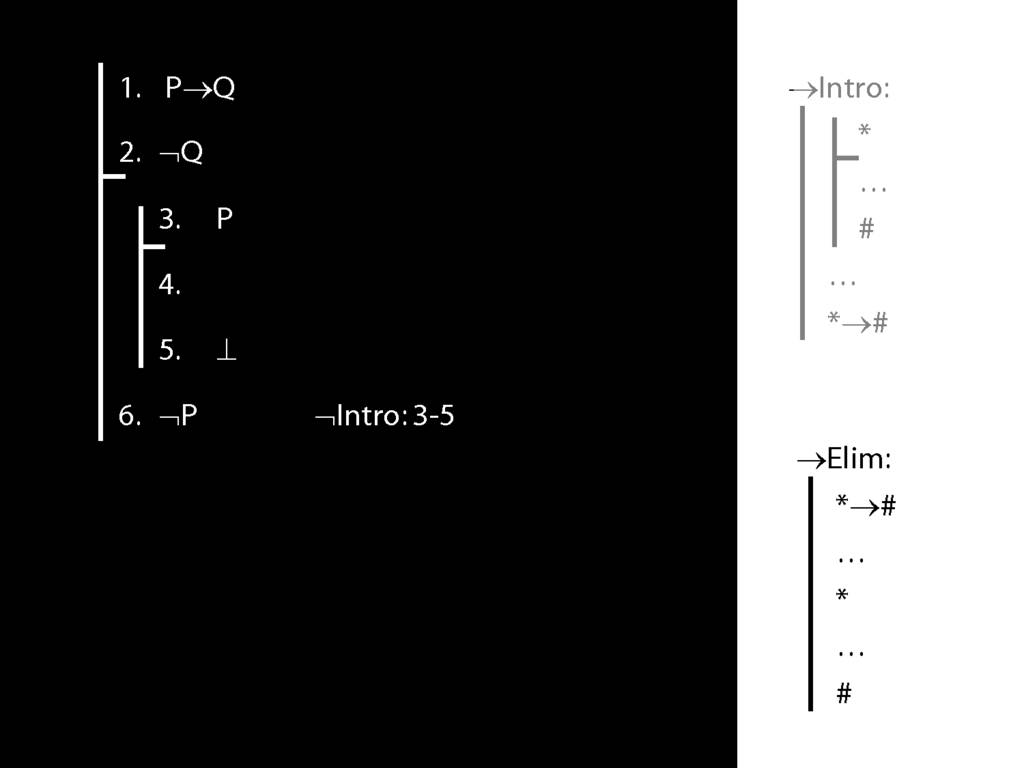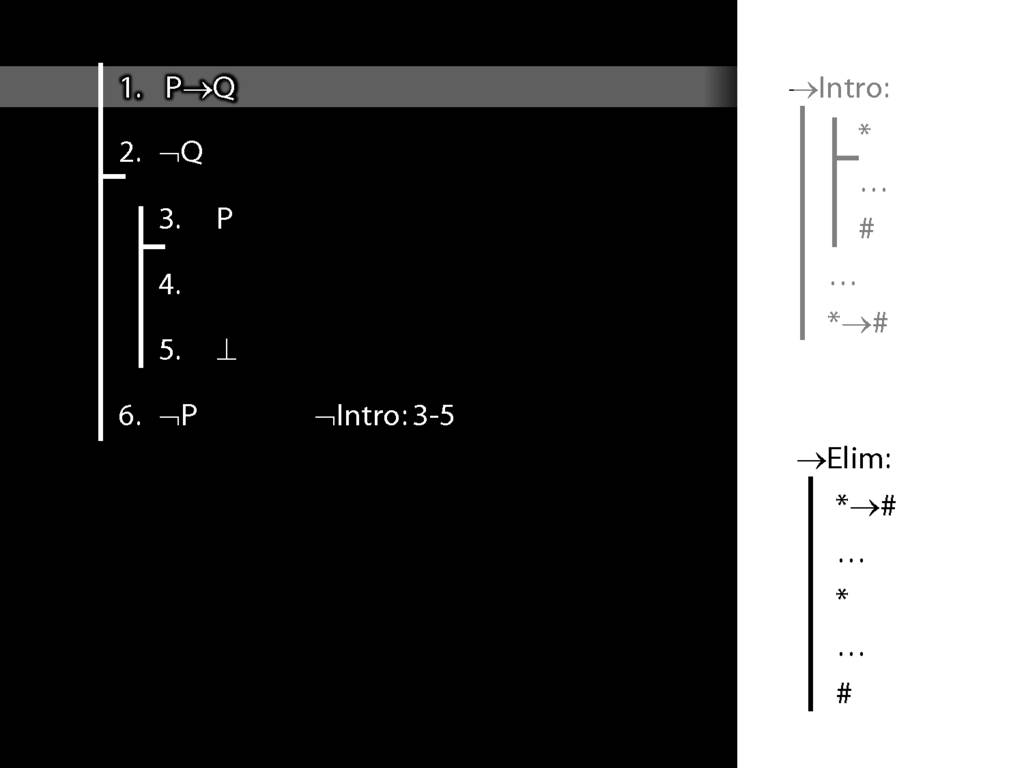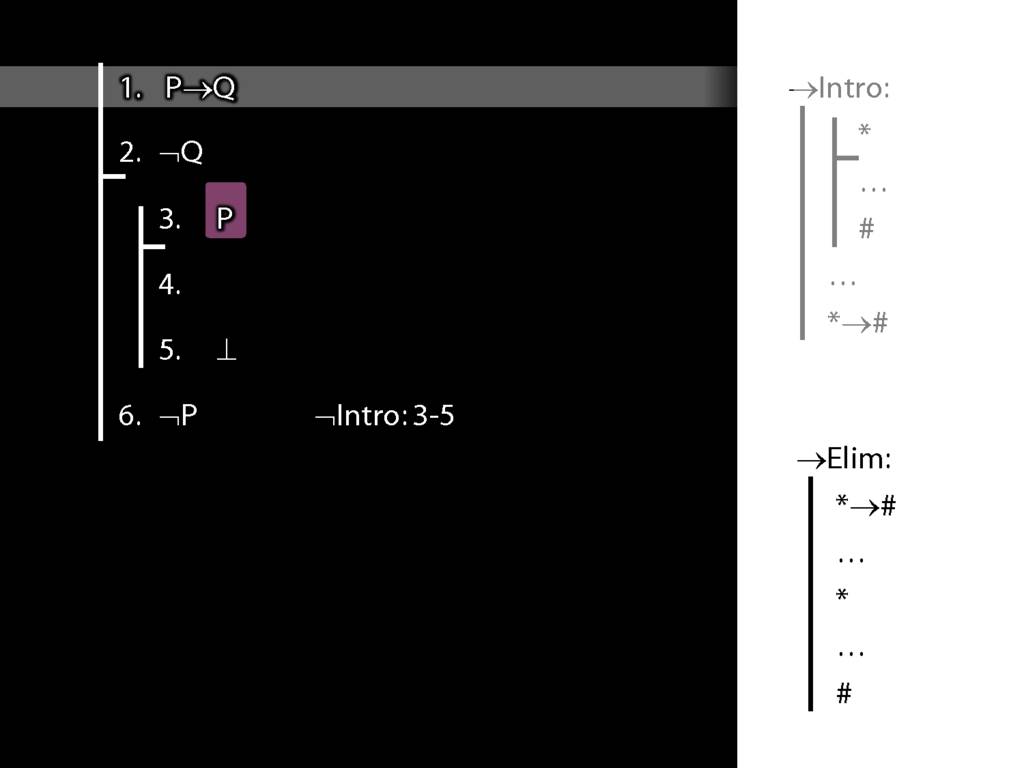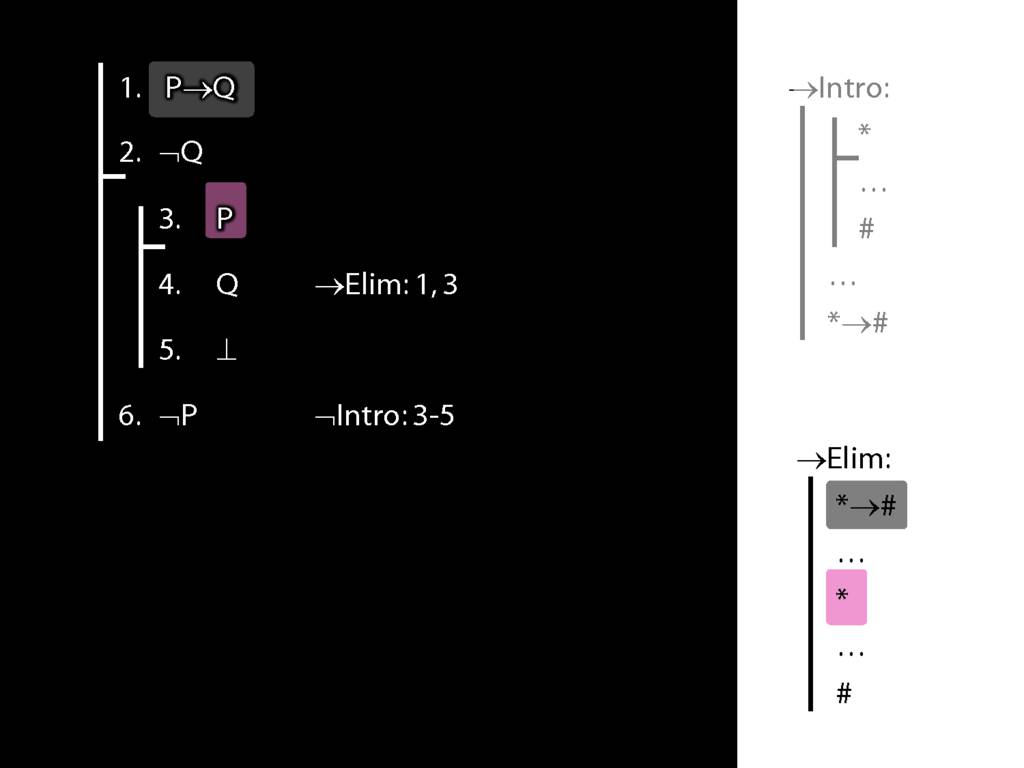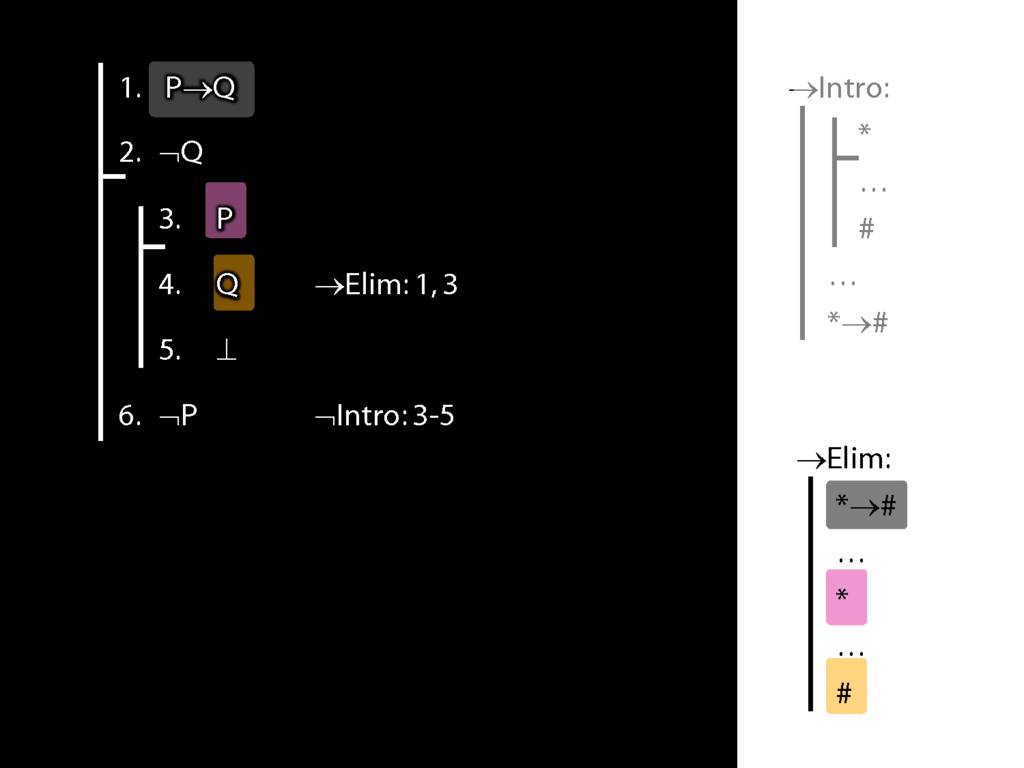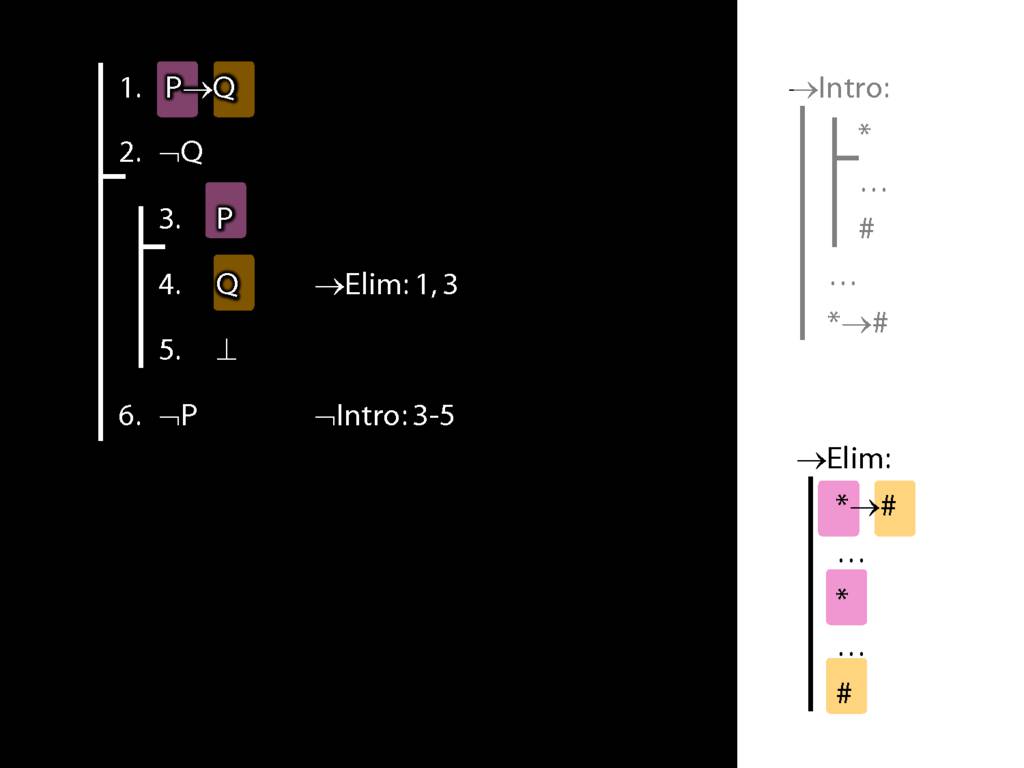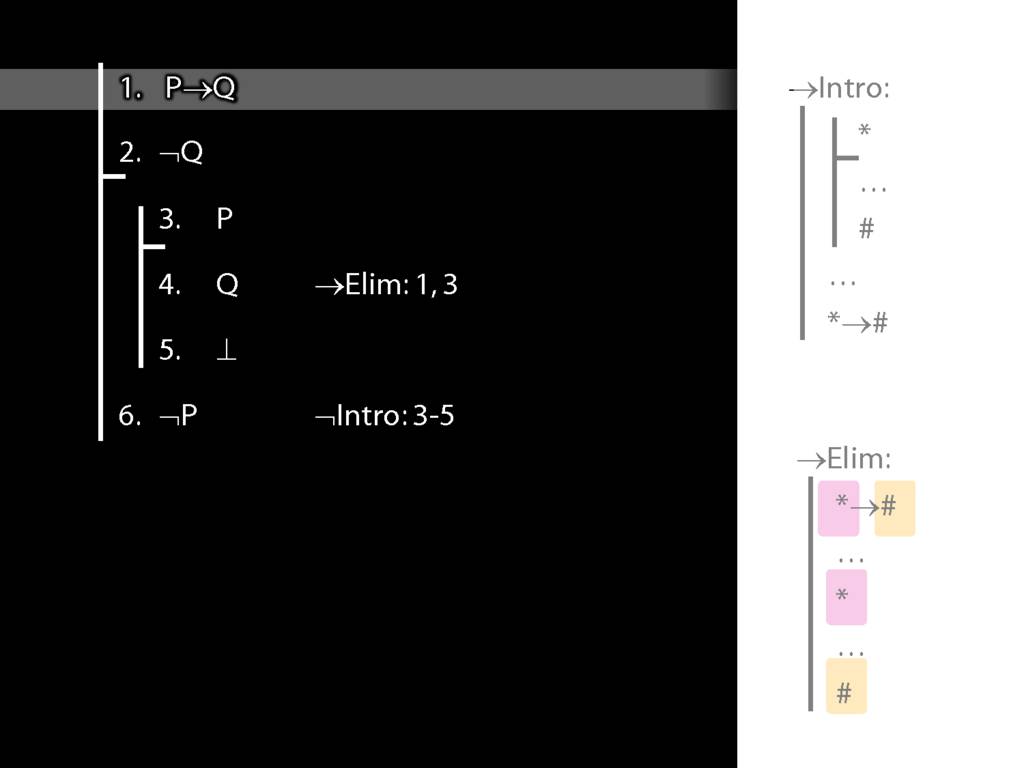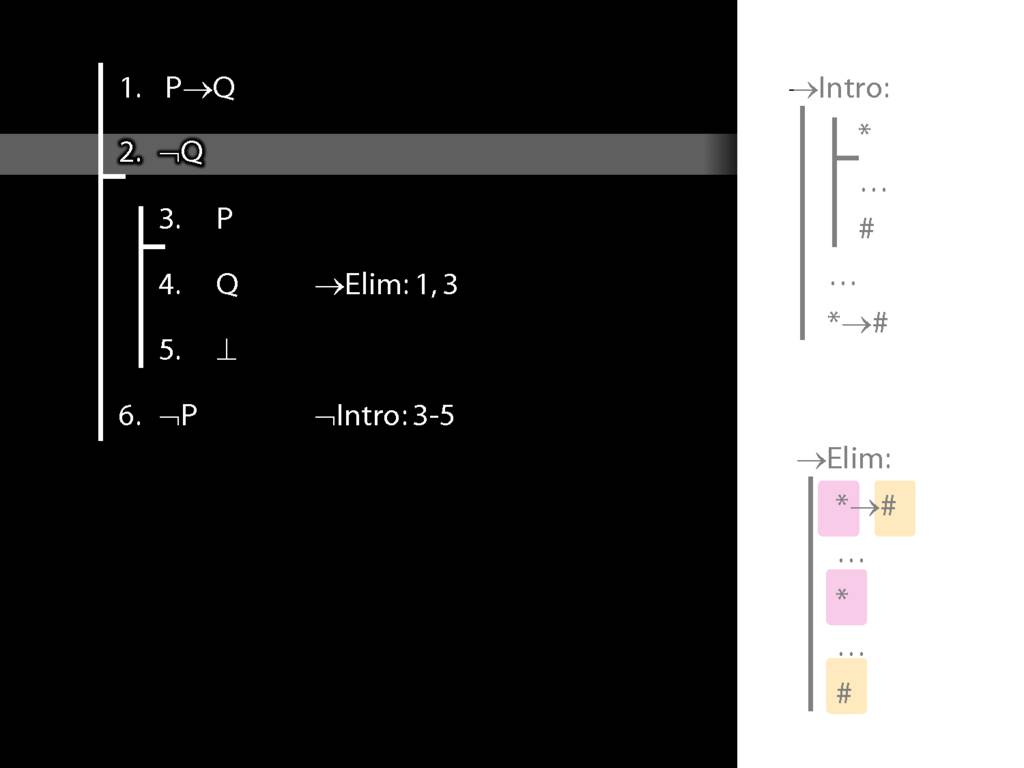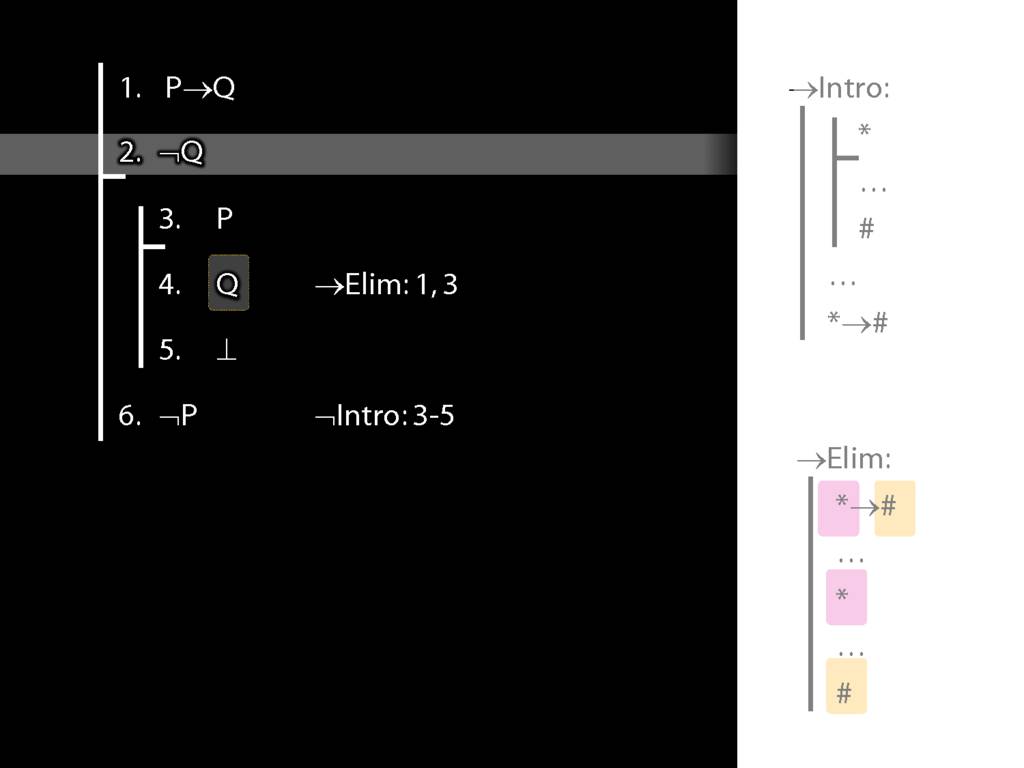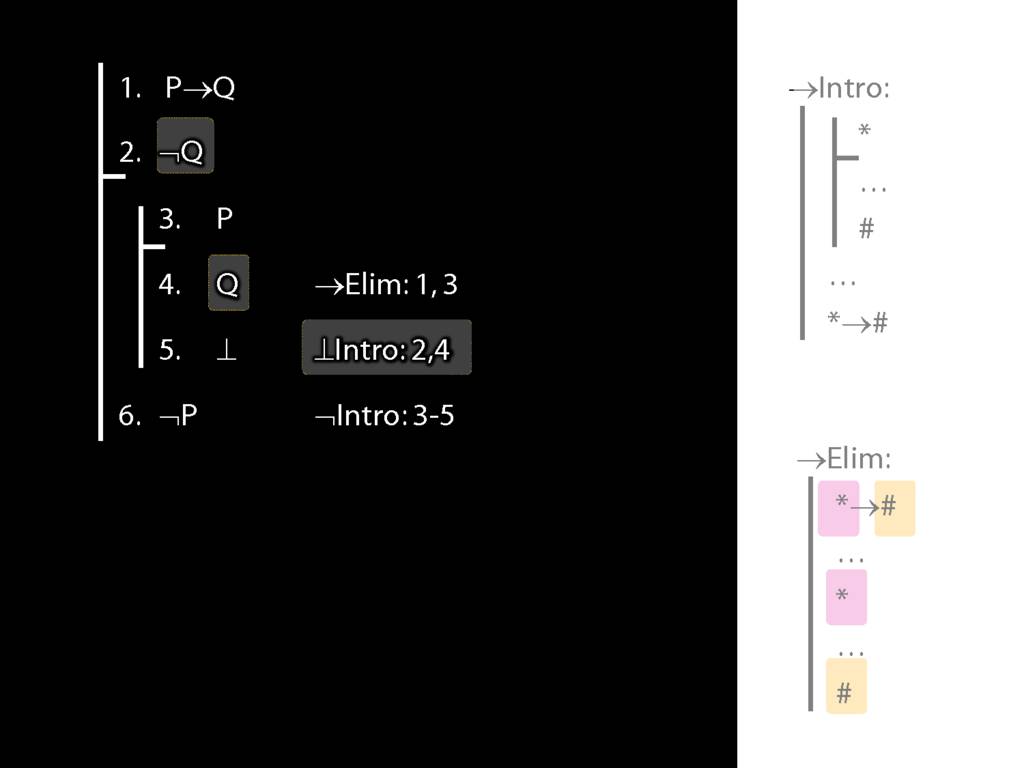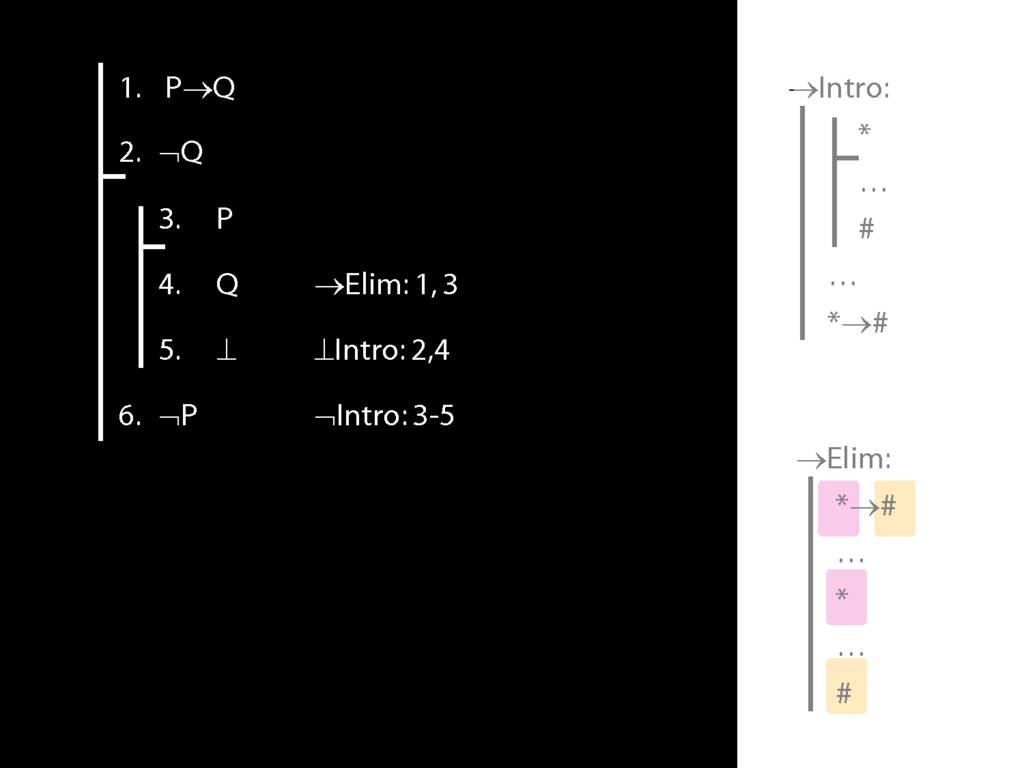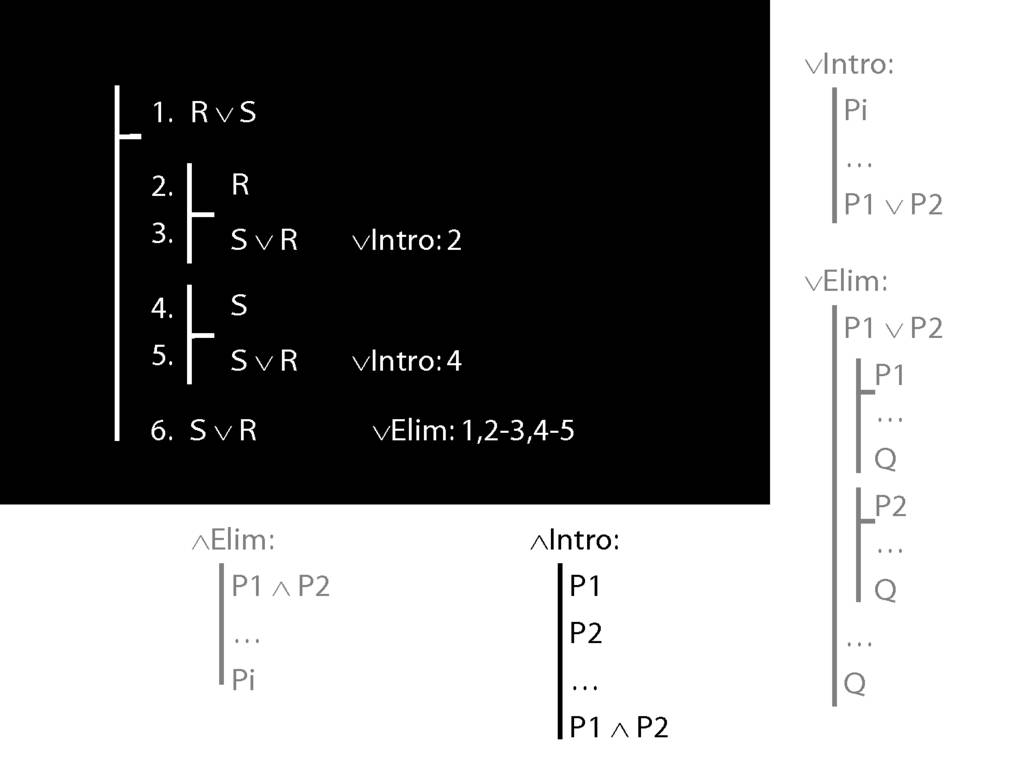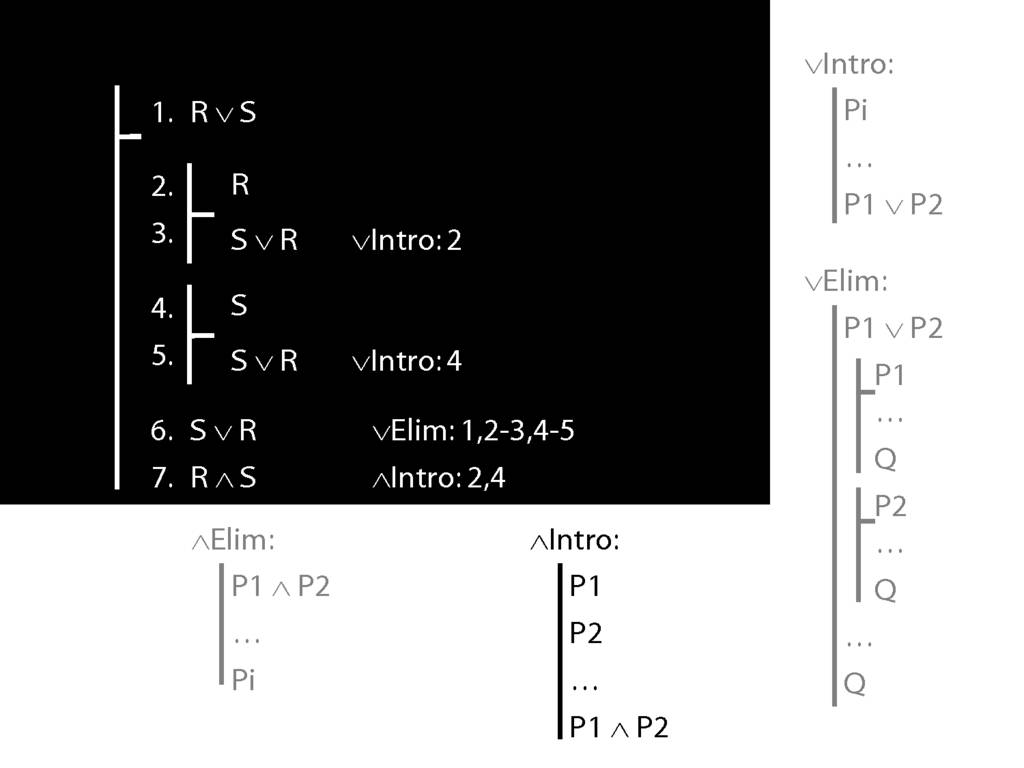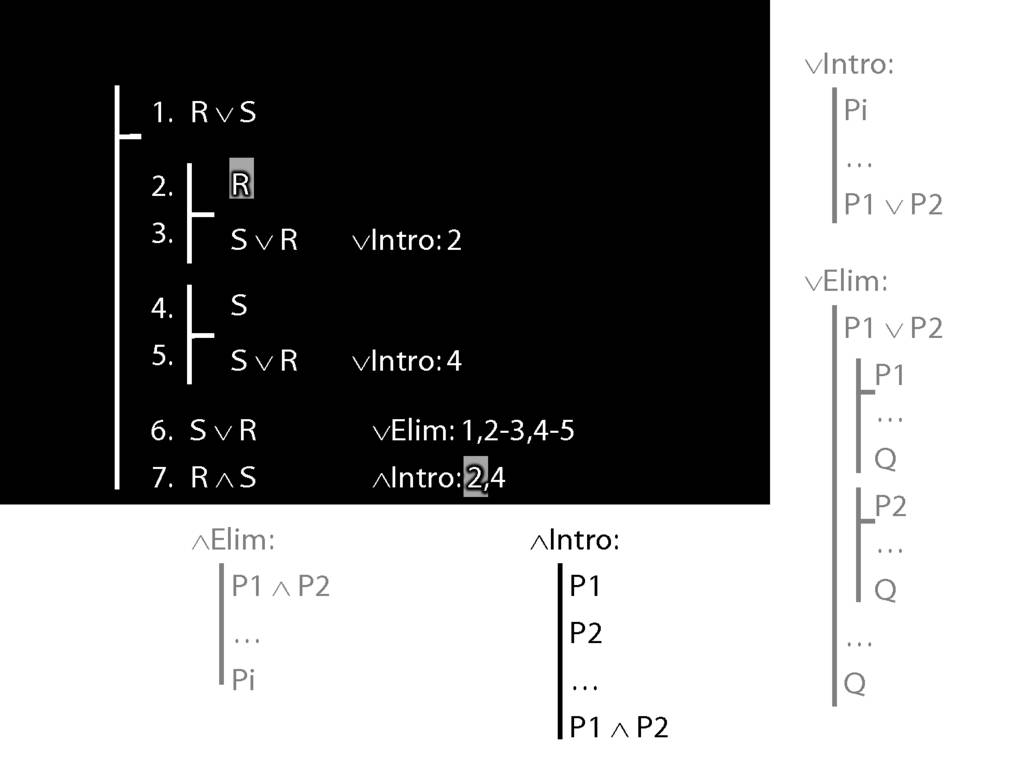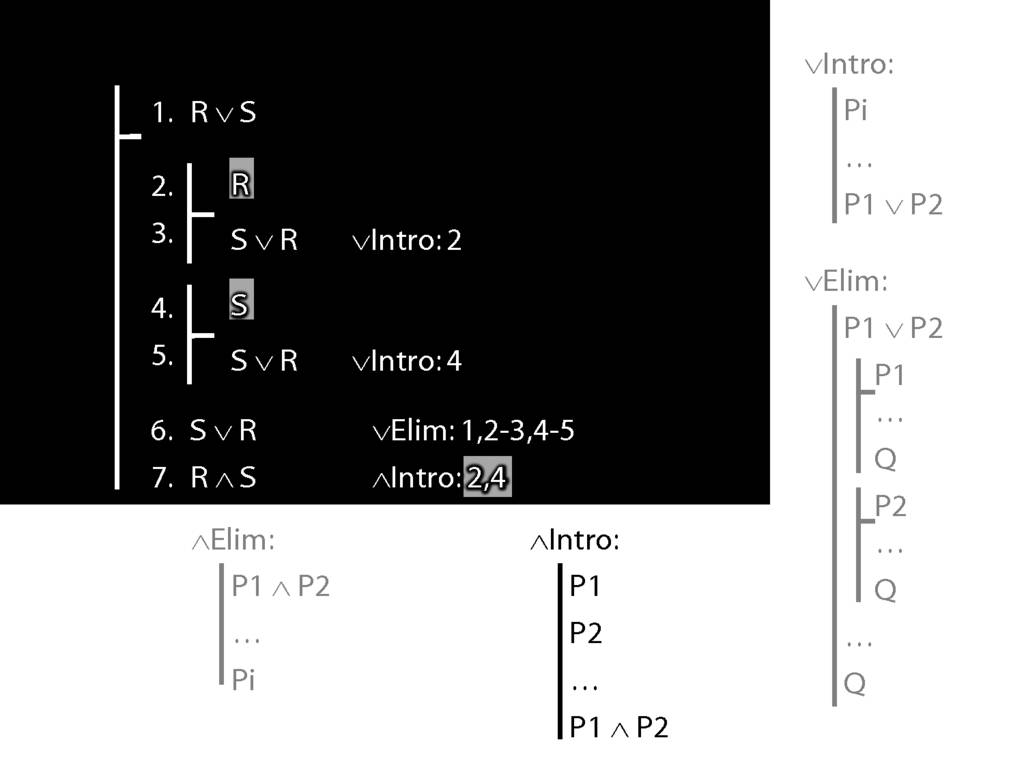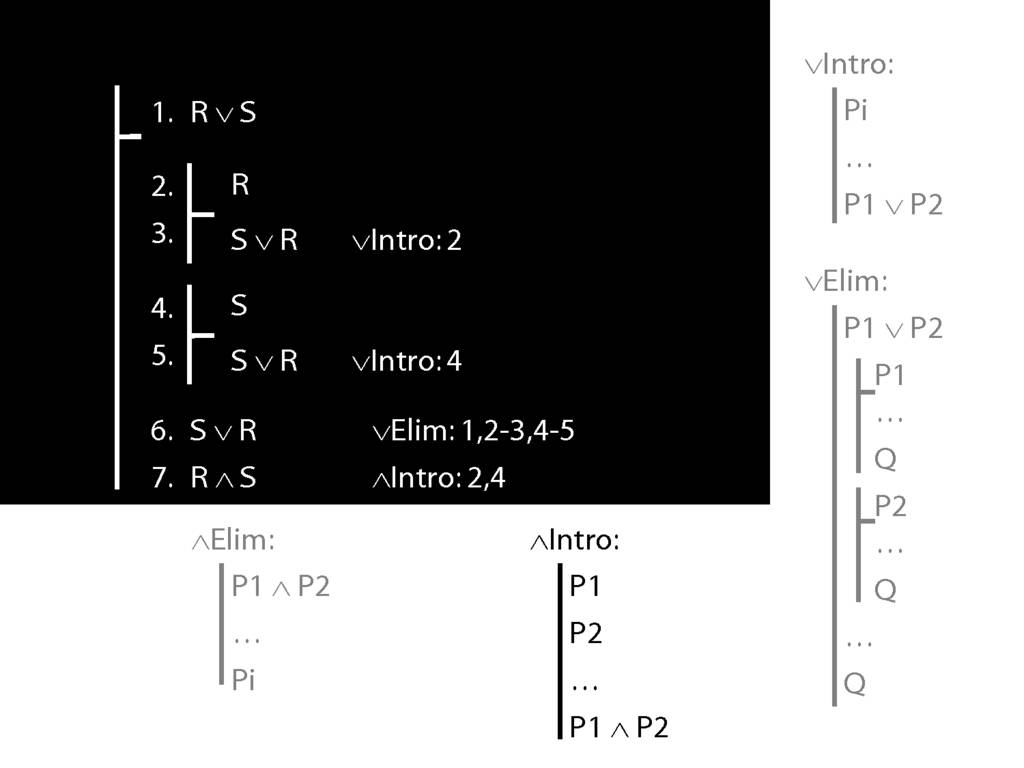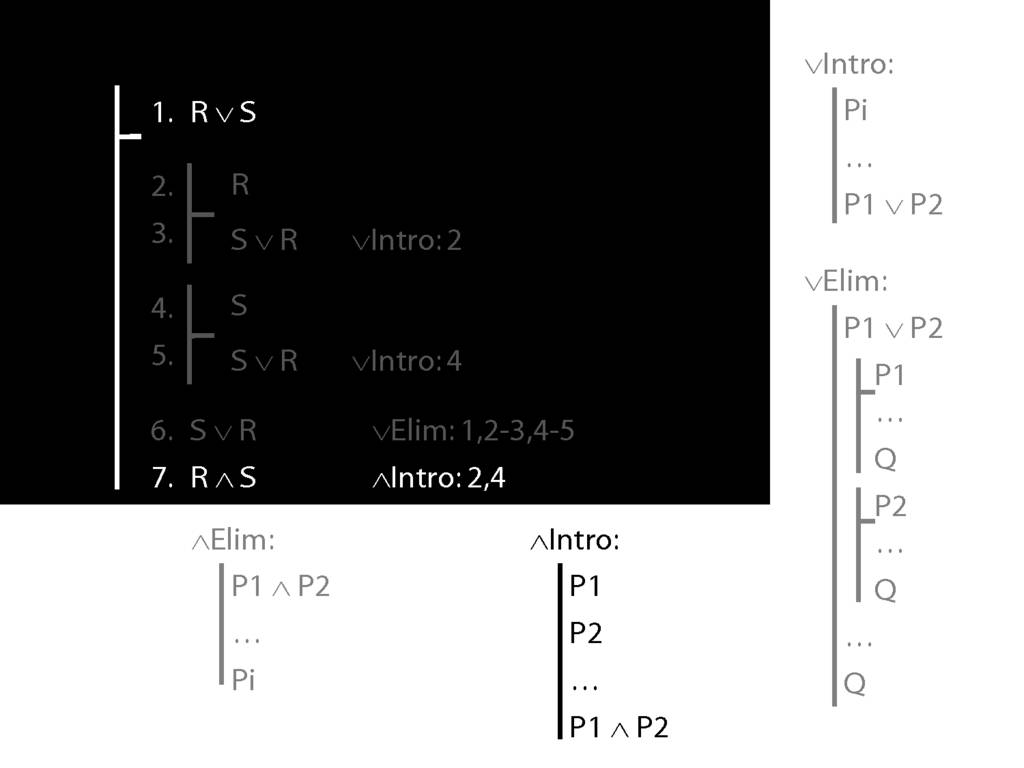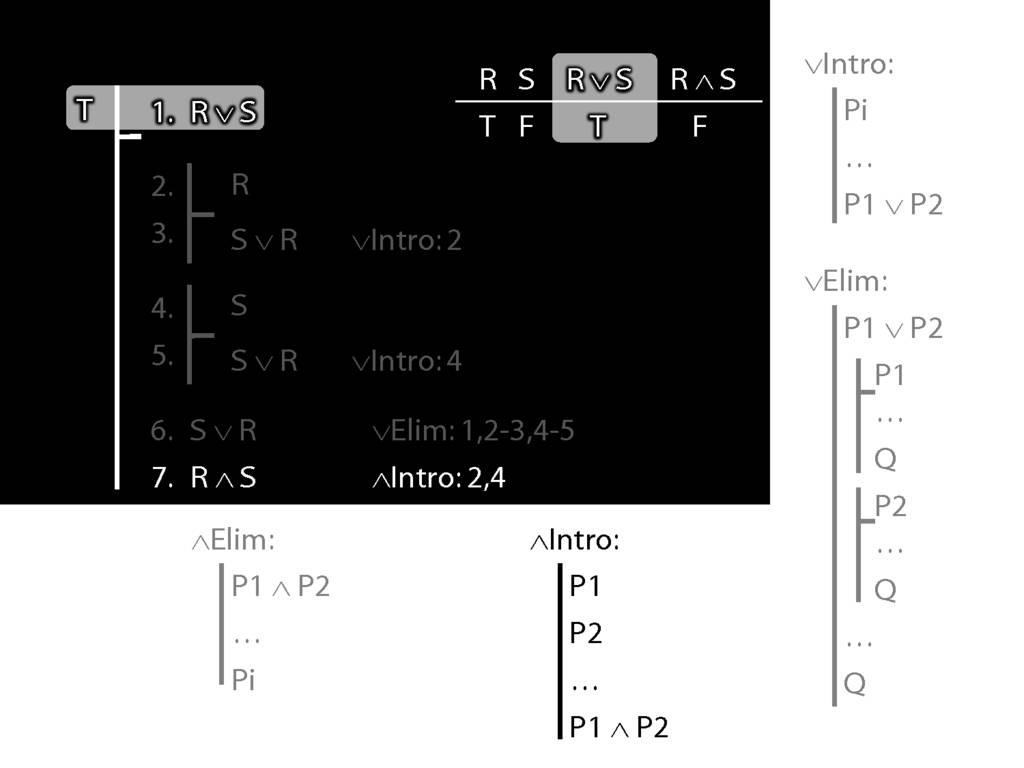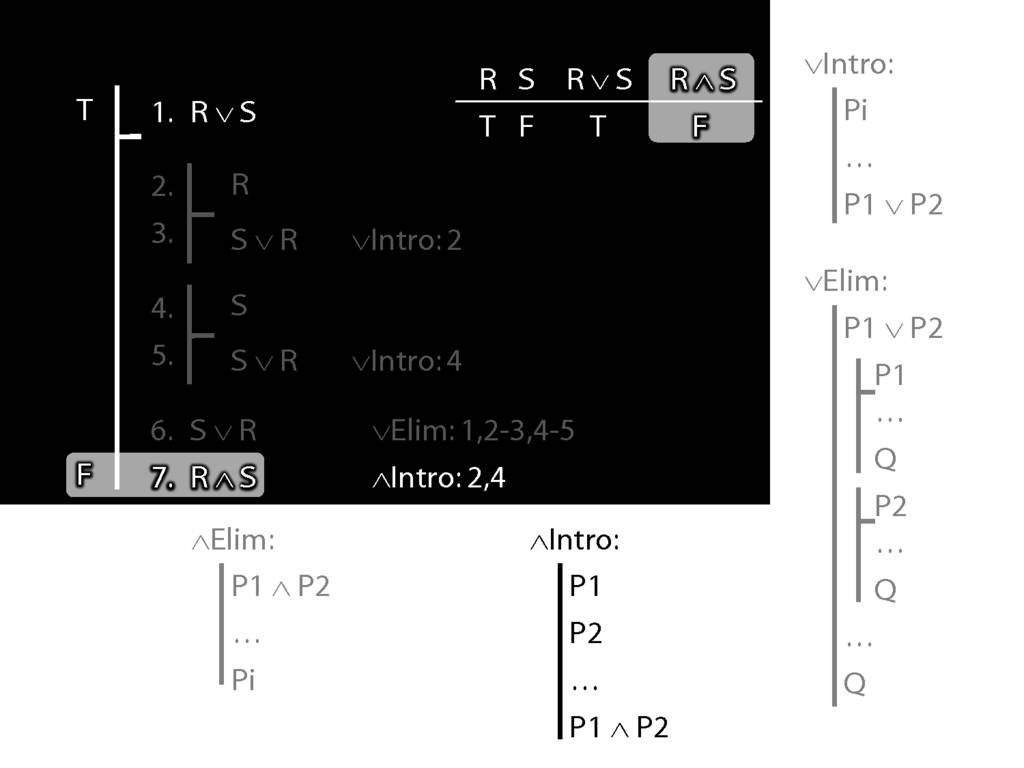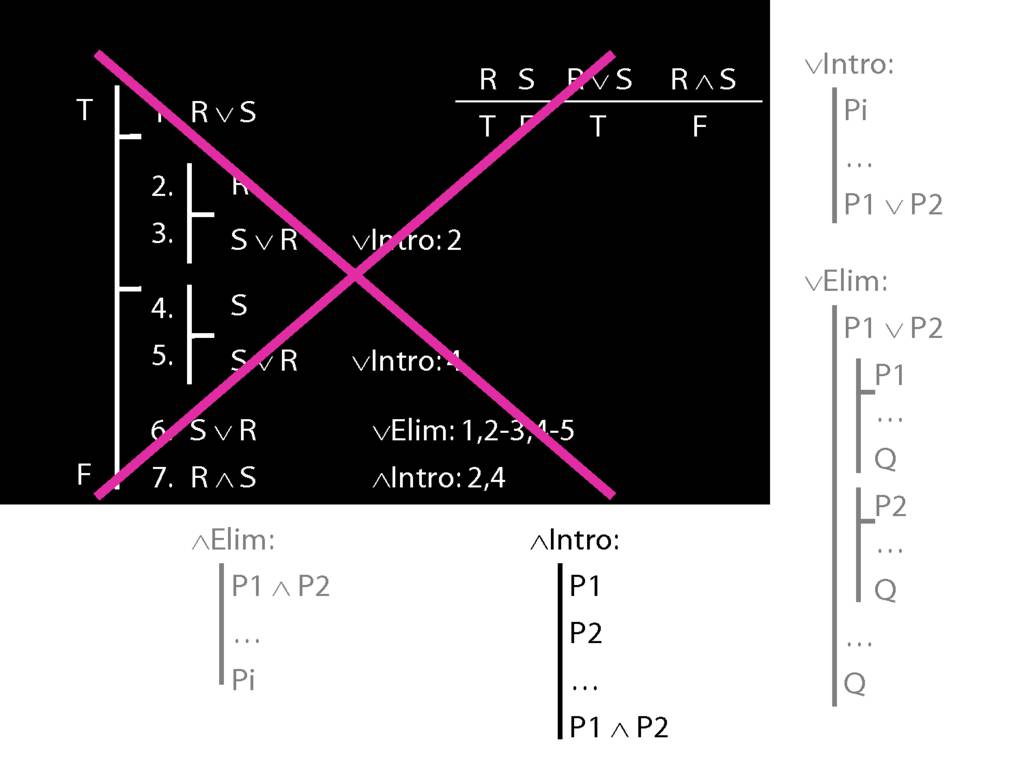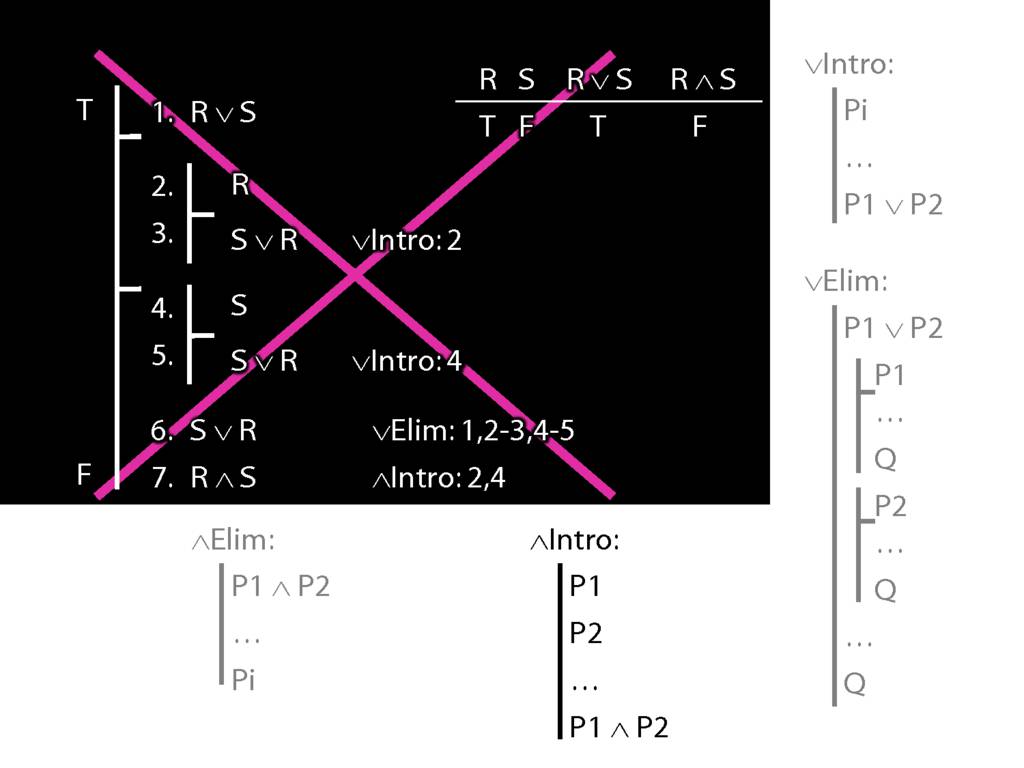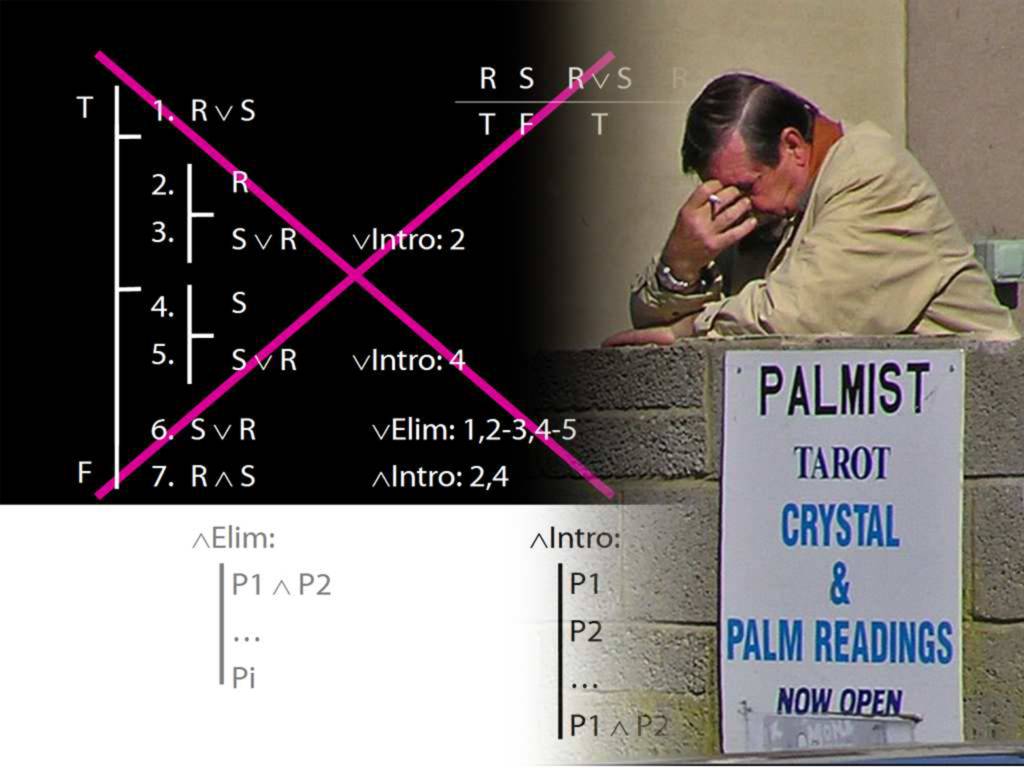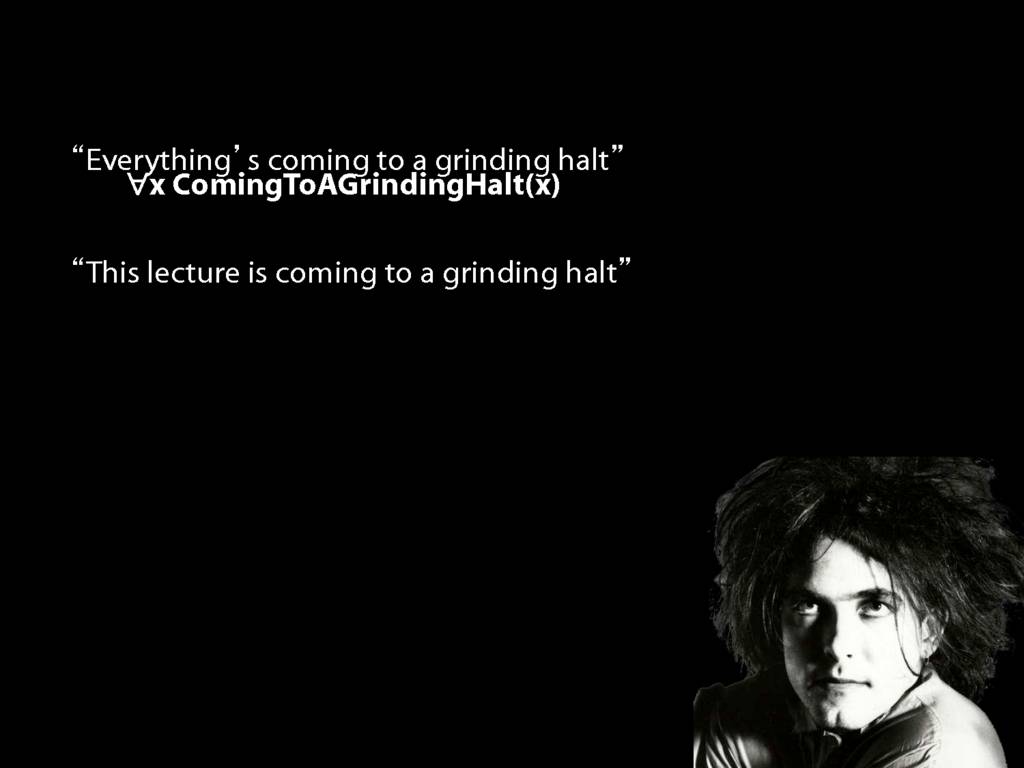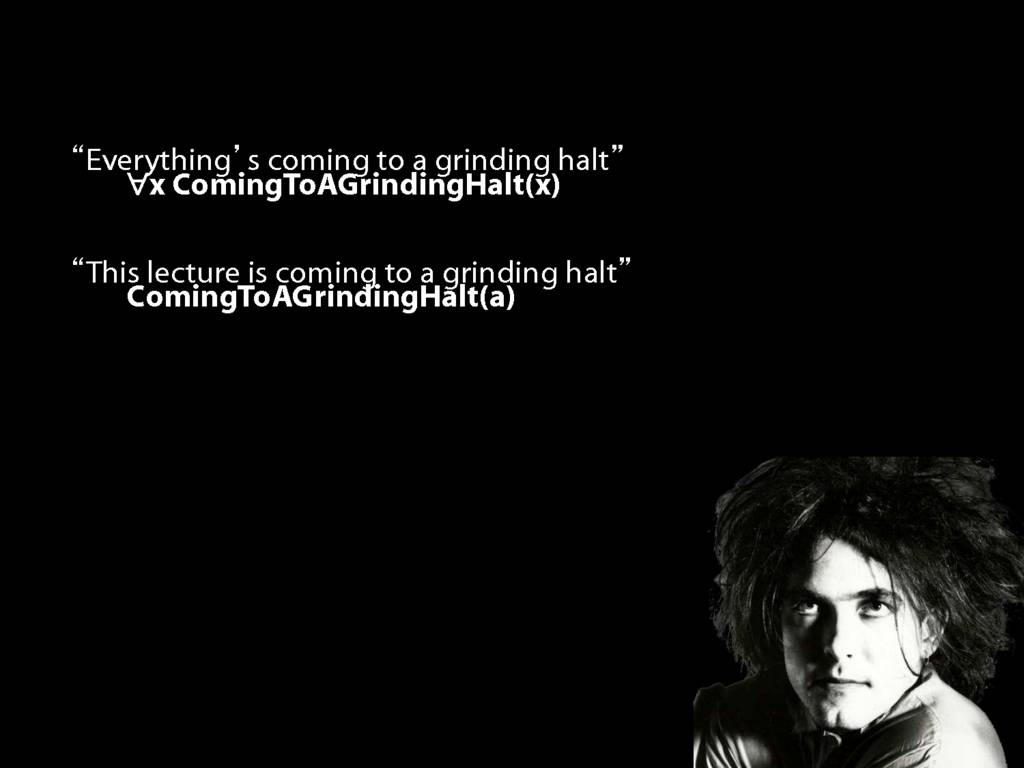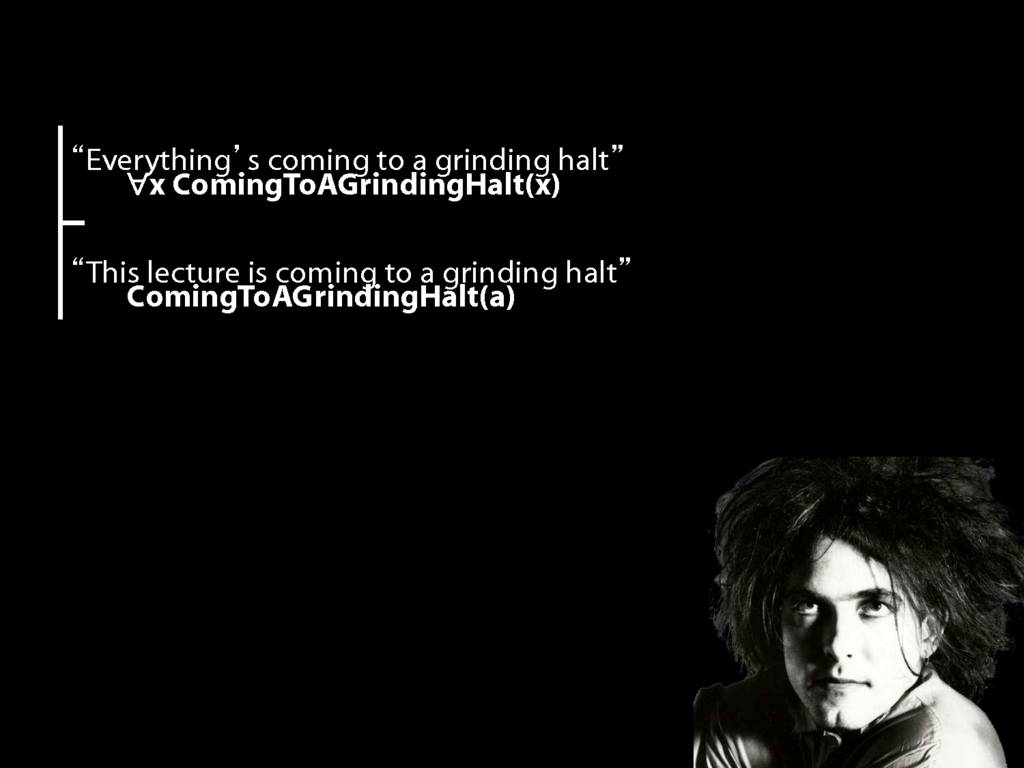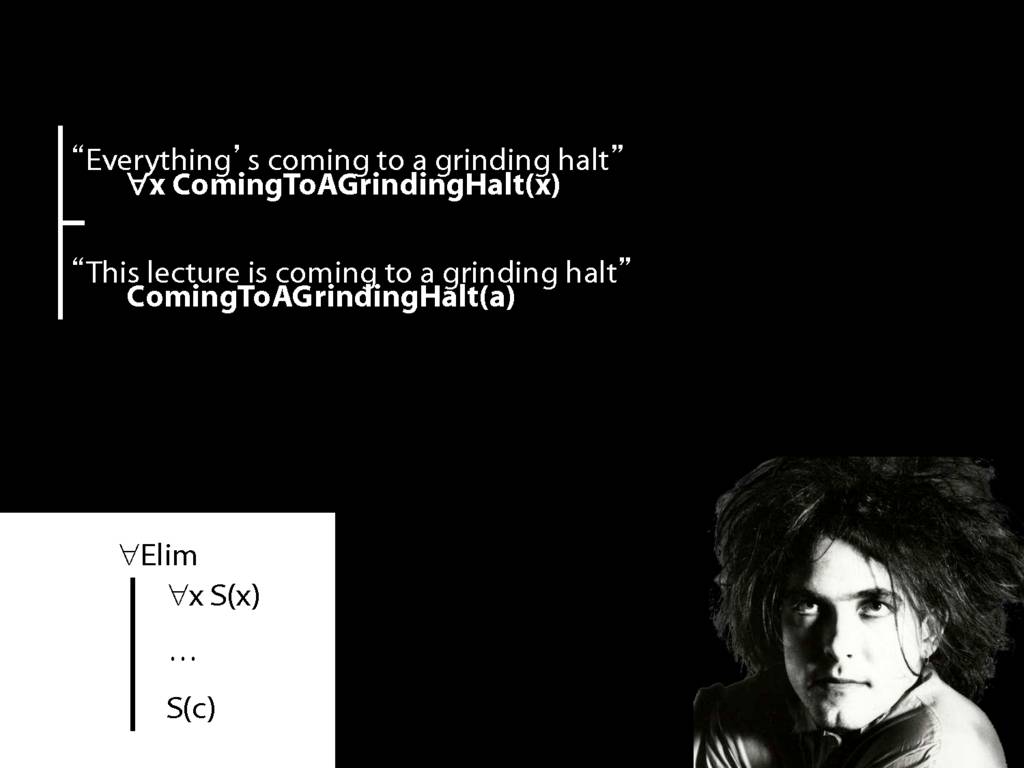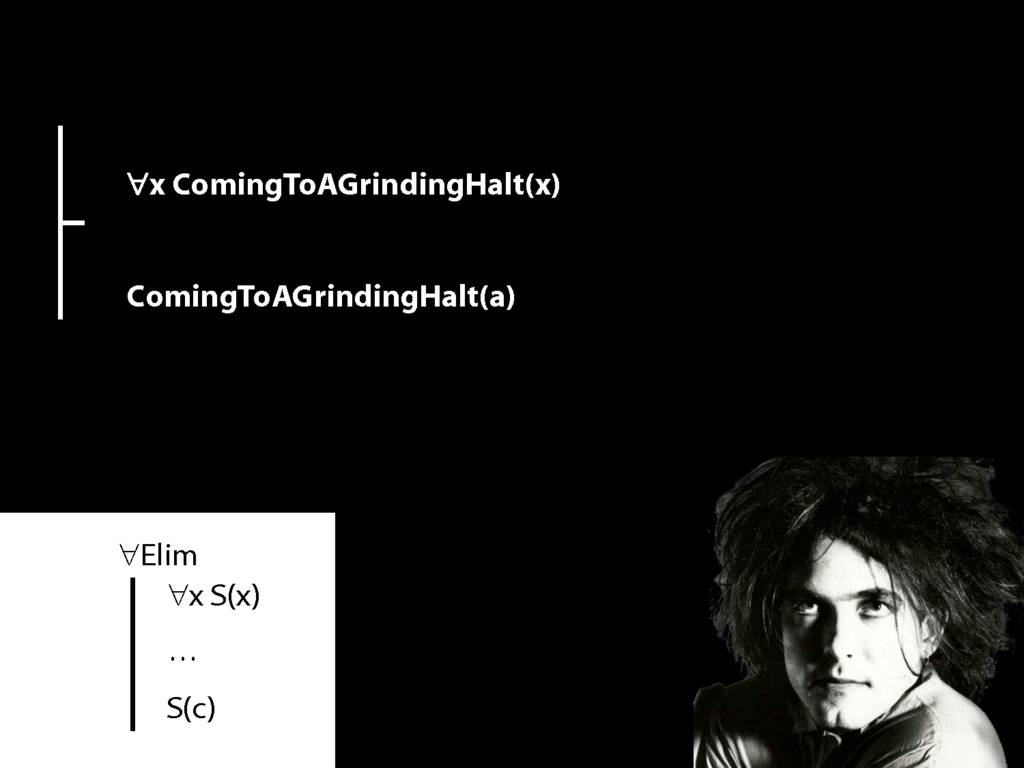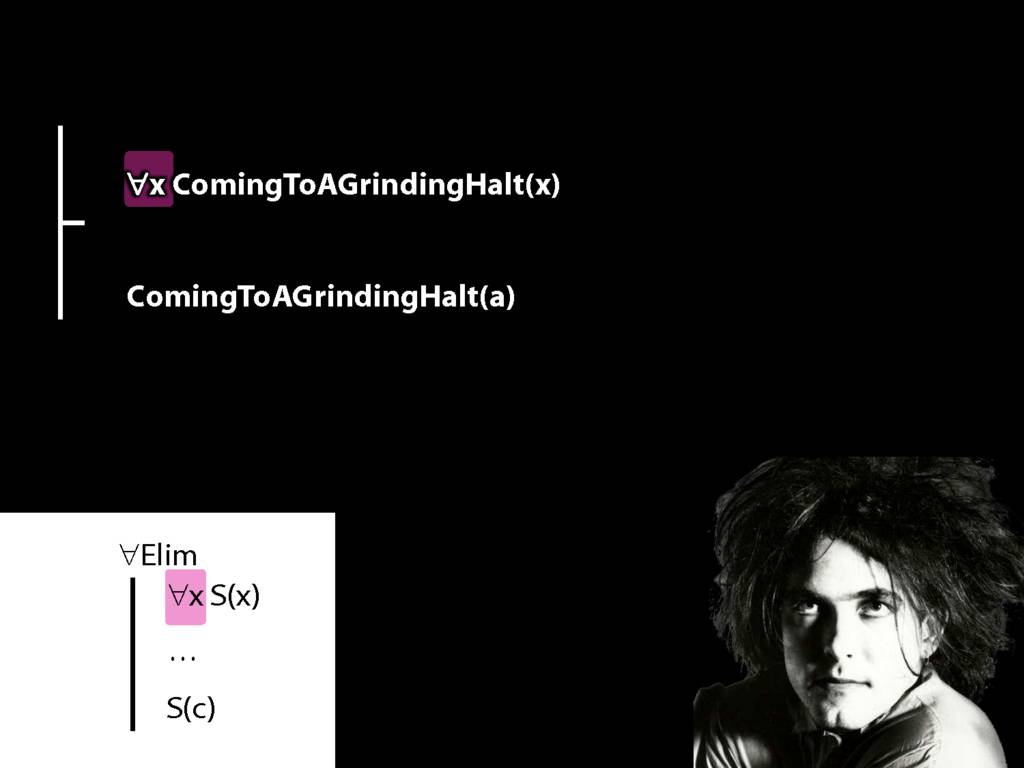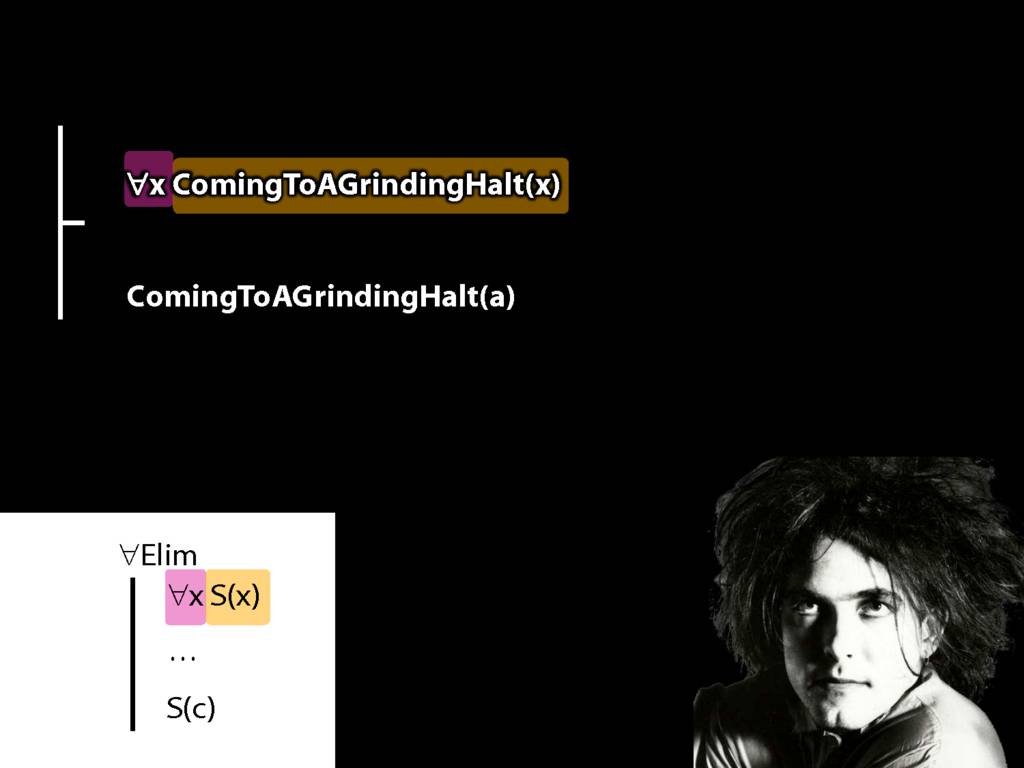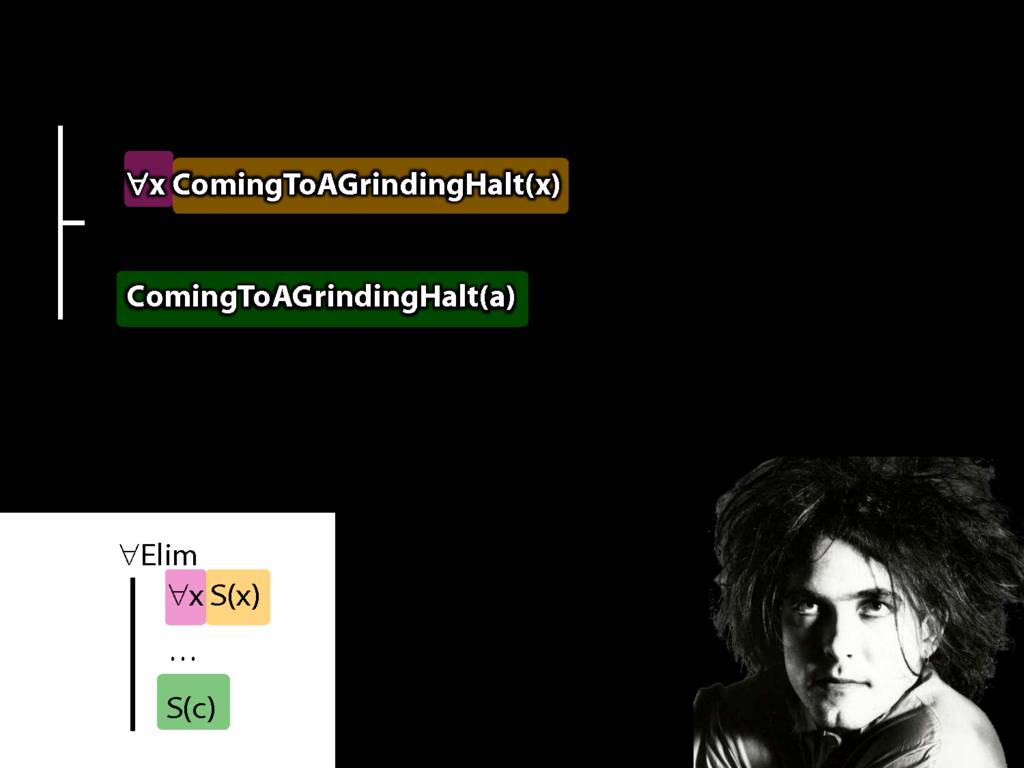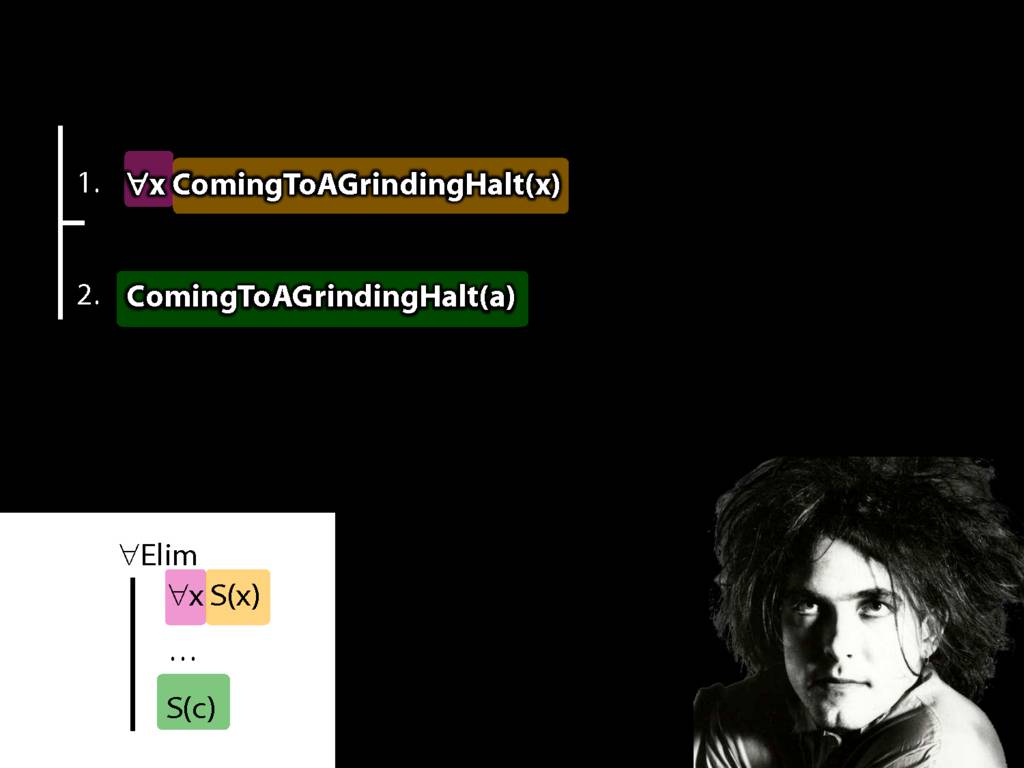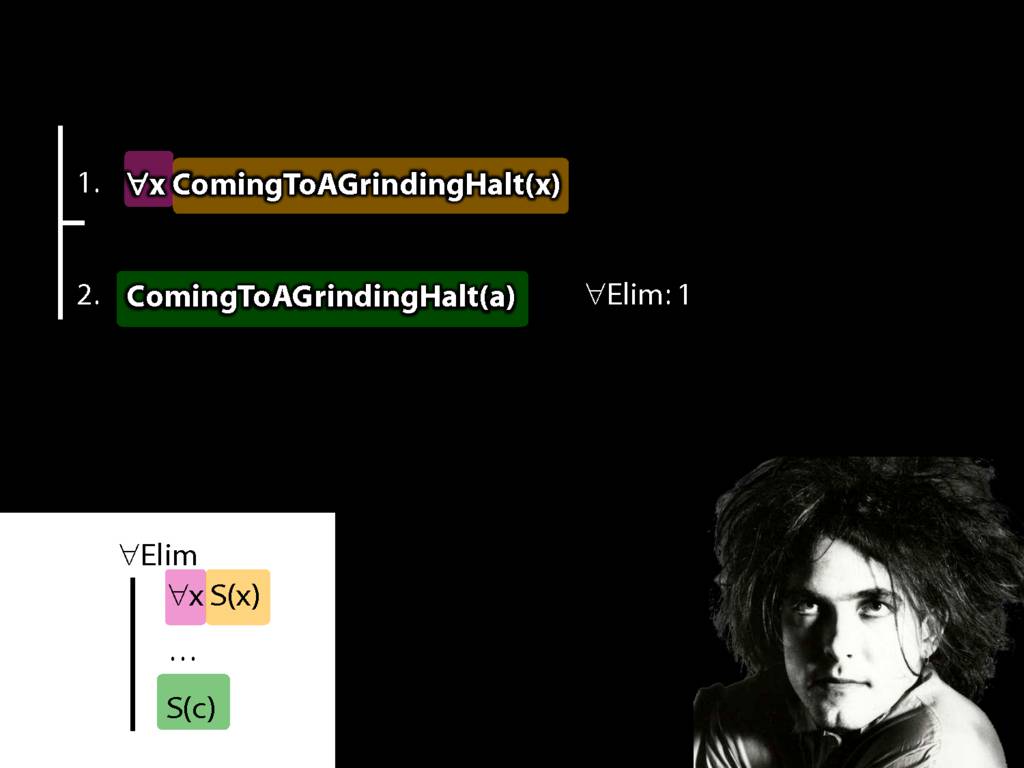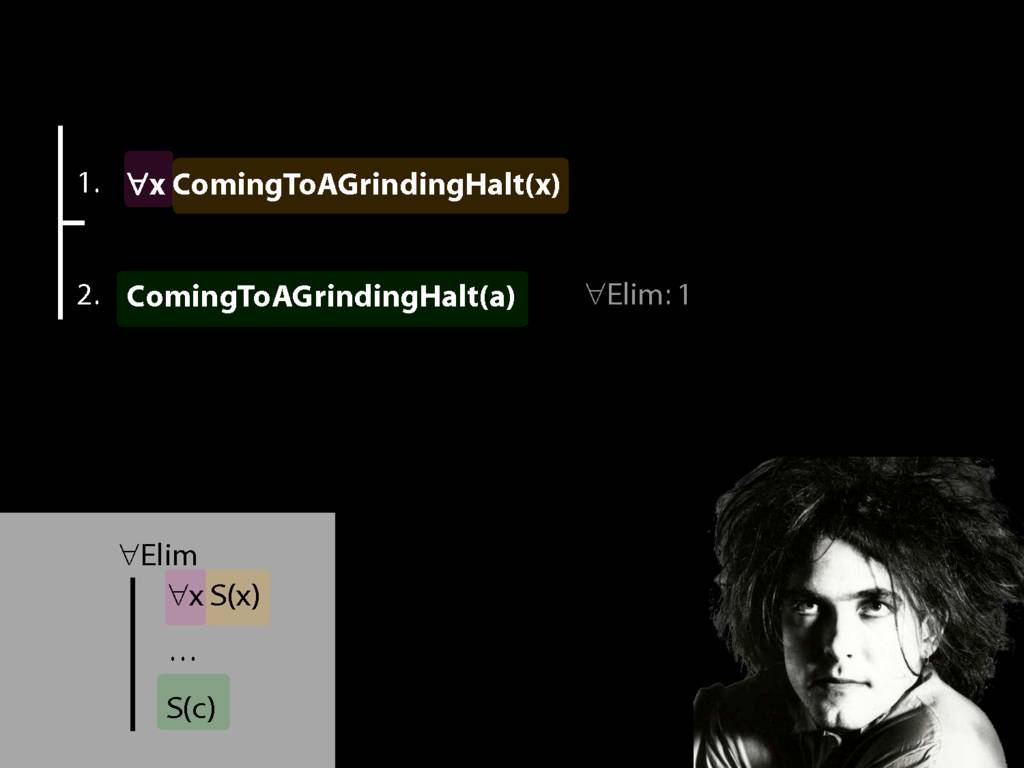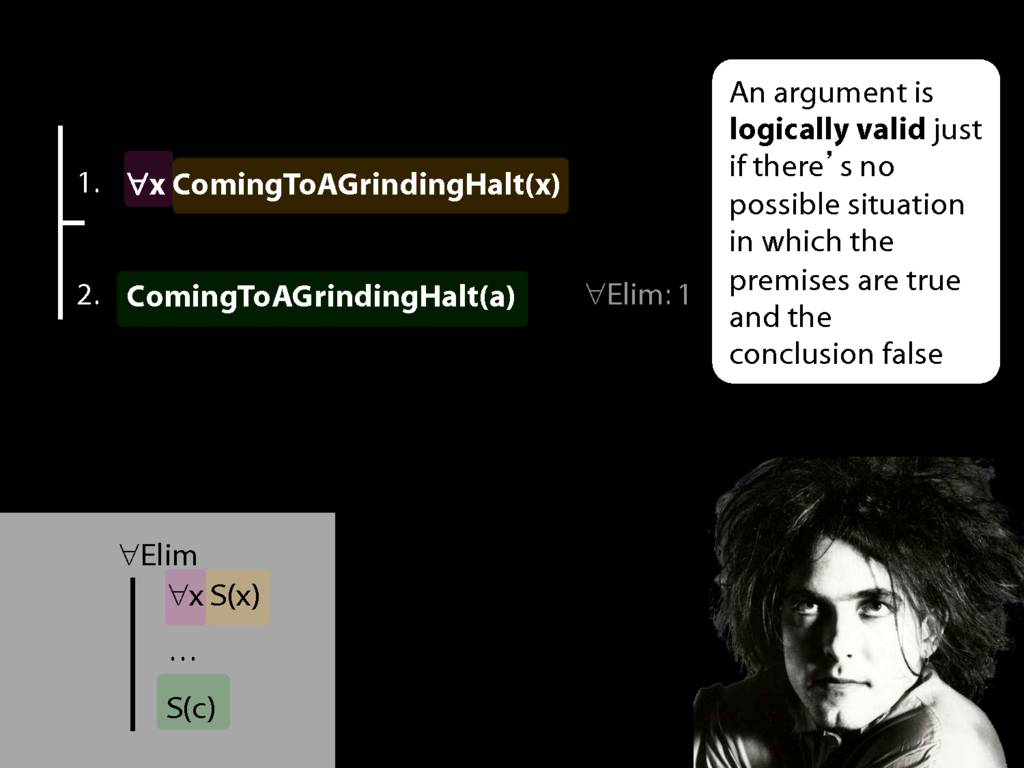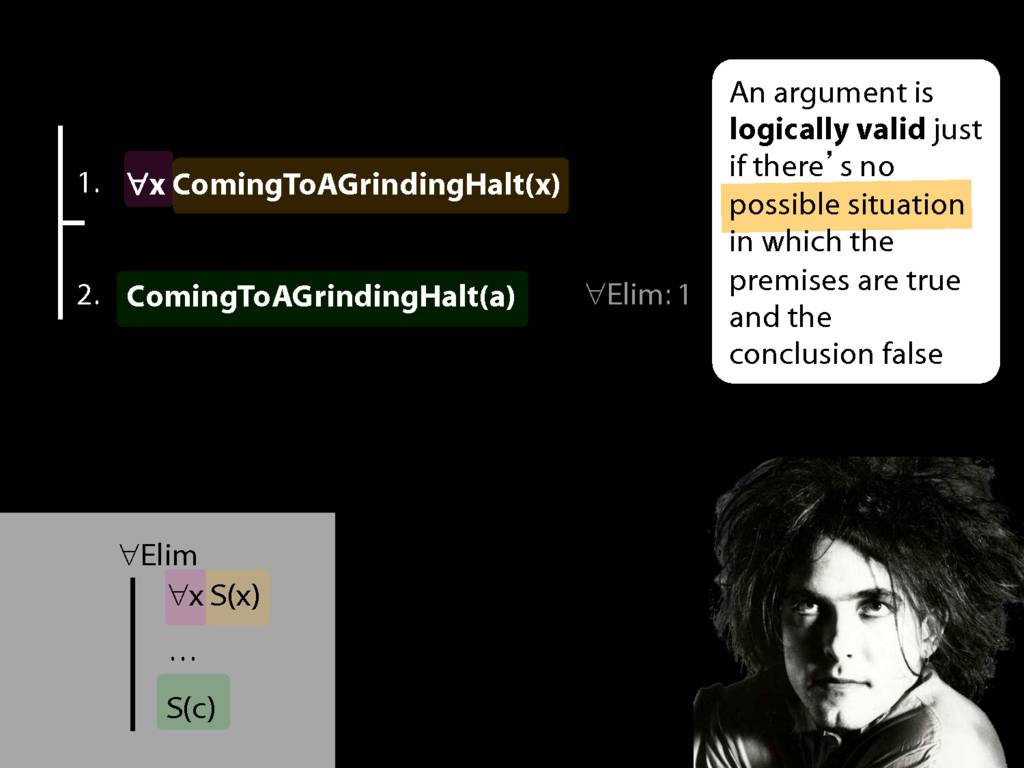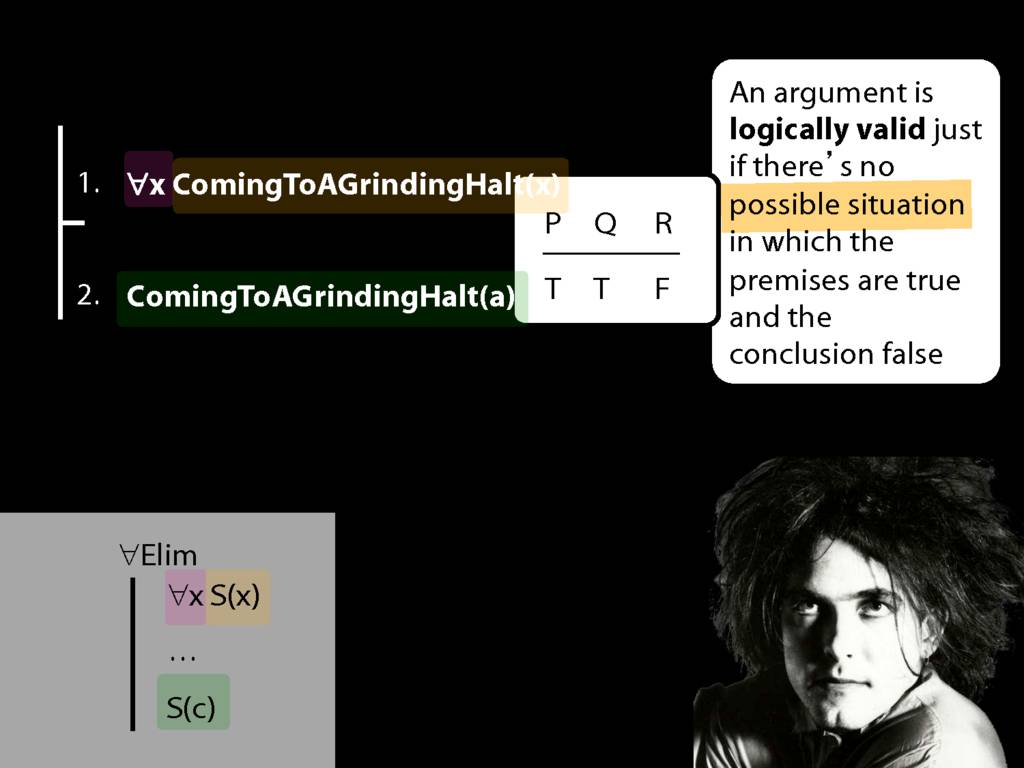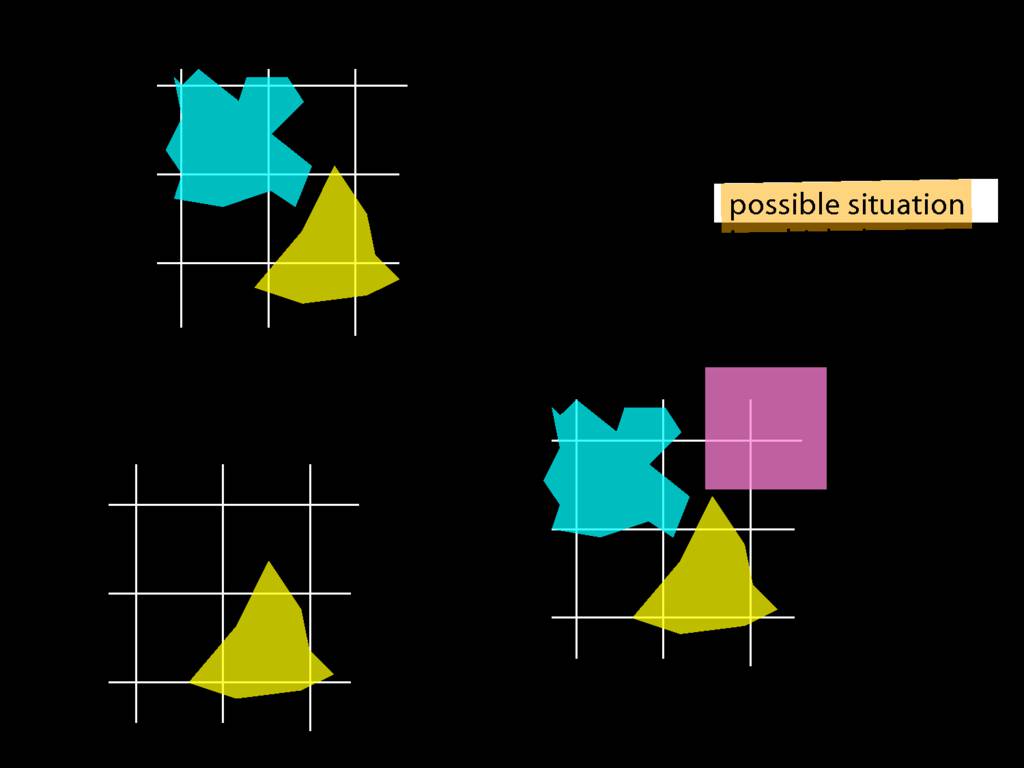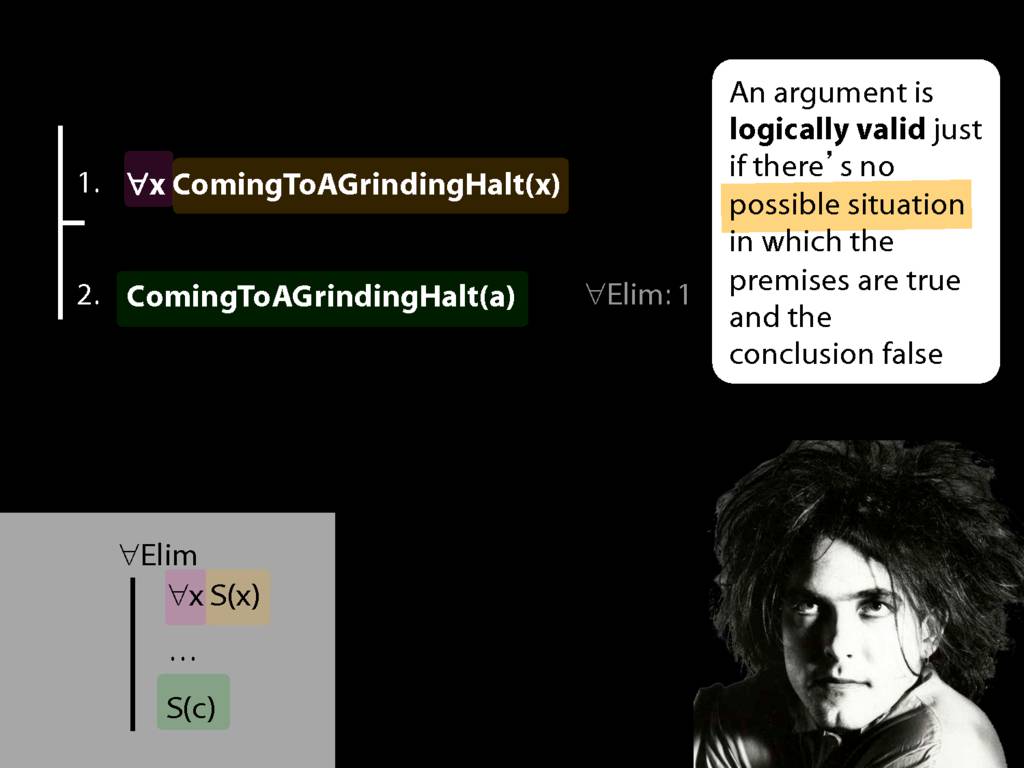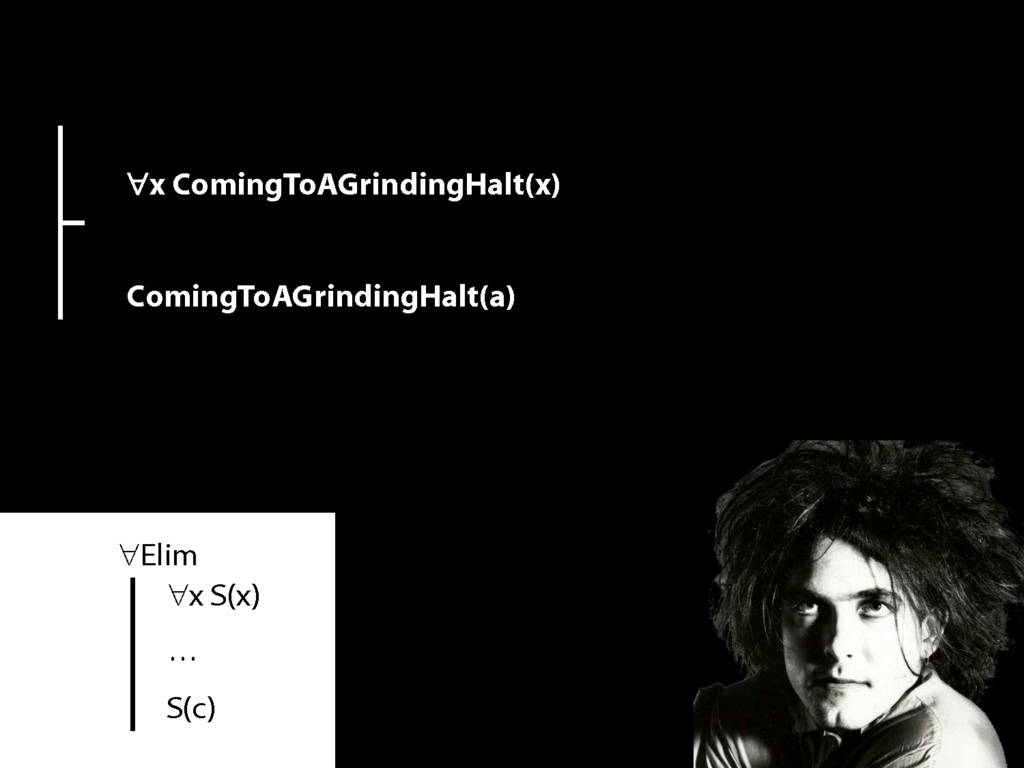Press the right key for the next slide (or swipe left)
also ...
Press the left key to go backwards (or swipe right)
Press n to toggle whether notes are shown (no equivalent if you don't have a keyboard)
Press m or double tap to see a menu of slides

\def \ititle {Logic (PH133)}
\def \isubtitle {Lecture 6}
\begin{center}
{\Large
\textbf{\ititle}: \isubtitle
}
\iemail %
\end{center}
Readings refer to sections of the course textbook, \emph{Language, Proof and Logic}.
\section{DeMorgan: ¬(A ∧ B) ⫤⊨ ¬A ∨ ¬B}
\emph{Reading:} §3.6, §4.2
`$\leftmodels\models$' means `is logically equivalent to', so for now `has the same truth table as'.
A $\leftmodels\models$ ¬¬A
¬(A ∧ B) $\leftmodels\models$ (¬A ∨ ¬B)
¬(A ∨ B) $\leftmodels\models$ (¬A ∧ ¬B)
A → B $\leftmodels\models$ ¬A ∨ B
¬(A → B) $\leftmodels\models$ ¬(¬A ∨ B) $\leftmodels\models$ A ∧ ¬B
Here's a useful equivalence: double negations cancel out (at least in logic).
A ⫤⊨ ¬¬A
is logically equivalent to
i.e. has the same truth table as
| ¬(A ∧ B) | ⫤⊨ | (¬A ∨ ¬B) |
| ¬(A ∨ B) | ⫤⊨ | (¬A ∧ ¬B) |
| A → B | ⫤⊨ | ¬A ∨ B |
| ¬(A → B) | ⫤⊨ | ¬(¬A ∨ B) | ⫤⊨ | A ∧ ¬B |
| A | B | A ∧ B | ¬(A ∧ B) | ¬A | ¬B | ¬A ∨ ¬B |
| T | T | T | F | F | F | F |
| T | F | F | T | F | T | T |
| F | T | F | T | T | F | T |
| F | F | F | T | T | T | T |
| A | B | ¬(A ∨ B) | ¬A ∧ ¬B |
| T | T | F | F |
| T | F | F | F |
| F | T | F | F |
| F | F | T | T |
| A | B | A → B | ¬A ∨ B |
| T | T | T | T |
| T | F | F | F |
| F | T | T | T |
| F | F | T | T |
| A | B | A → B | ¬(A → B) | ¬(¬A ∨ B) | A ∧ ¬B |
| T | T | T | F | F | F |
| T | F | F | T | T | T |
| F | T | T | F | F | F |
| F | F | T | F | F | F |
3.19
4.15--18
7.1--7.2, *7.3--7.6
3.19
4.31

Negation and the arrow: A → ¬B ⊭ ¬(A → B)
\section{Negation and the arrow: A → ¬B ⊭ ¬(A → B)}
\emph{Reading:} §3.6
is not a logical consequence of
i.e.
is not a logically valid argument| A | B | A → ¬B | A → B | ¬(A → B) |
| T | T | F | T | F |
| T | F | T | F | T |
| F | T | T | T | F |
| F | F | T | T | F |

↔ : truth tables and rules
\section{↔ : truth tables and rules}
| A | B | A → B | B → A | (A → B) ∧ (B → A) | A ↔ B |
| T | T | T | T | T | T |
| T | F | F | T | F | F |
| F | T | T | F | F | F |
| F | F | T | T | T | T |
| | 1. | A ↔ B | |
| | 2. | A | |
| | 3. | B | ↔Elim: 1,2 |
| | 1. | A ↔ B | |
| | 2. | B | |
| | 3. | A | ↔Elim: 1,2 |
\section{All Cats Are Grey}
Everything is broken
∀x Broken(x)
All squares are broken.
∀x ( Square(x) → Broken(x) )
Everything of mine is broken.
∀x ( ThingofMine(x) → Broken(x) )
Everybody loves chocolate or logic..
∀x ( Person(x) → LovesChocolateOrLogic(x) )

universal:arrow, existential:conjunction
\section{Don't use ∃ with →}
\begin{minipage}{\columnwidth}
Is true ∃x(Square(x) → Broken(x)) in this world?
\end{minipage}
∃x(Square(x) → Broken(x))
\hspace{3mm} ⫤⊨
∃x(¬Square(x) ∨ Broken(x))
\hspace{3mm} ⫤⊨
∃x(¬Square(x)) ∨ ∃x(Broken(x))
1.
∀x(Square(x) ∧ Broken(x))
2.
∀x(Square(x) → Broken(x))
⫤⊨
3.∀x(¬Square(x) ∨ Broken(x))
4.∃x(Square(x) ∧ Broken(x))
5.∃x(Square(x) → Broken(x))
⫤⊨
6.∃x(¬Square(x) ∨ Broken(x))
⫤⊨
7.∃x(¬Square(x)) ∨ ∃x(Broken(x))
nb
∀x(¬Square(x) ∨ Broken(x)) ⊭ ∀x(¬Square(x)) ∨ ∀x(Broken(x))
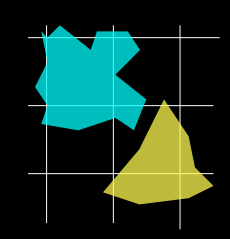
1. is false
2. is true

4. is false
5. is ???
9.10
9.15--9.17
*9.18--9
9.10
\section{¬Intro}
\emph{Reading:} §5.3, §6.3
6.7--6.10
*6.11--6.12
6.7--6.12
6.18--6.20
6.24--6.27
*6.40--6.42
Joint Action:
Which forms of shared agency underpin our social nature?
(Autumn Term)
Social Cognition:
What makes others’ minds and actions intelligible to us?
(Spring Term)
Origins of Mind: Philosophical Issues in Cognitive Development (PH357)
(http://origins-of-mind.butterfill.com)
\section{¬Intro Proof Example}
\emph{Reading:} §5.3, §6.3
6.24--6.26
\section{Subproofs Are Tricky}
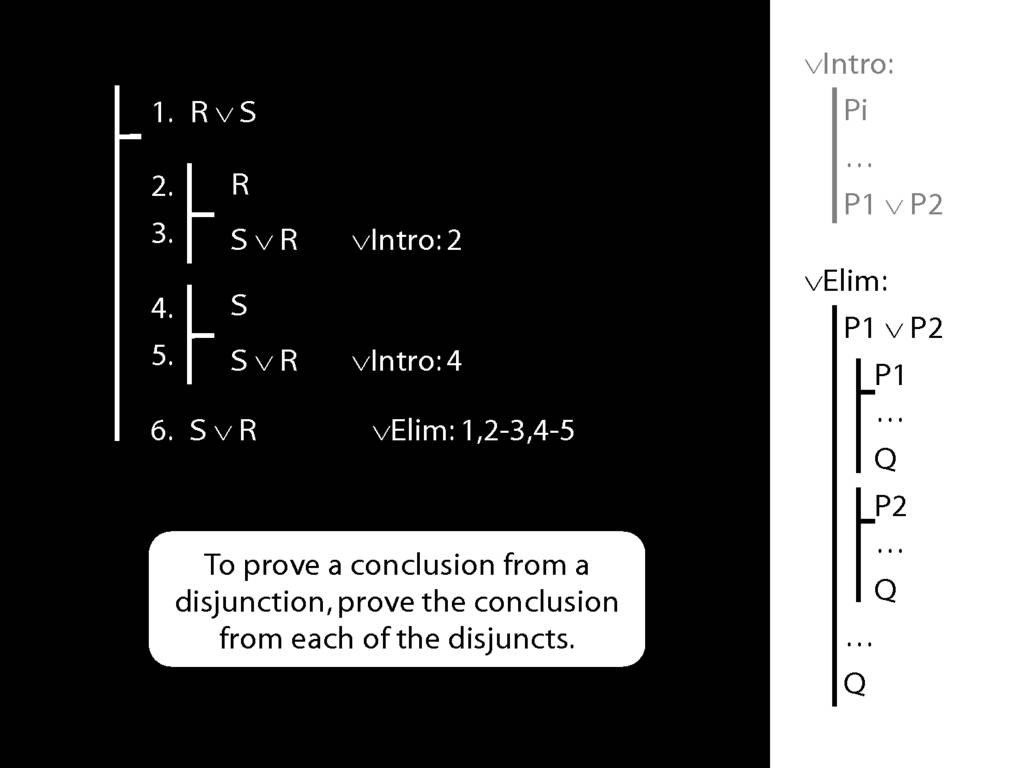
What is wrong with the following apparent proof?
\section{∀Elim}
\emph{Reading:} §13.1





